Media | Articles
2023 Bull Market List: This year’s 11 hottest collector vehicles
Welcome back to the Hagerty Bull Market List, our annual deep dive into the collector cars (and bikes) climbing the value ranks. This year, 2023, marks the sixth installment of our expert insights. Click to read past Bull Market Lists from 2018, 2019, 2020, 2021, and 2022.
Things seem to be getting more expensive every day, so it’s no shock that the Hagerty Automotive Intelligence team was able to easily assemble a Bull Market roundup with yet another unique assemblage of vehicles whose prices are moving up. As always, the hard part was paring down the initial list, as so many models have experienced upticks in value over the past couple of years. This year’s list contains some of last year’s leftovers, including the Toyota pickup and Harley Knucklehead, which didn’t make the cut in 2022, either because we couldn’t find a suitable example or because not enough pizza was thrown by their supporters during the intense “discussions” over the final 10.
Notable this year is the number of vehicles—six—built after 2000. Two cars are from the 1990s and one is from the 1980s, while only two vehicles, the 1938 Harley and the 1969 AMX, represent traditional “classic” decades. Bull Market is young this year, focusing on vehicles that are at the inflection point between depreciating used units and appreciating collectibles. Sure, a very few cars like the LaFerrari or Ford GT never depreciate. But most, and especially most sports cars, sink like boat anchors—at least, for a time.
This year’s Bull Market recognizes that sublime hair-raisers like the C5 Corvette Z06, Audi R8, Mercedes-Benz SLR, and Lamborghini Murciélago don’t go soft for long, particularly as younger buyers who craved the cars when they were new discover that they have now reached an affordable plateau, just as the buyers are reaching their peak earning years. The lesson, as always, is that if you want it, don’t wait.
Want to stay on top of changing classic-car values year-round? Check out Hagerty Insider, our publication devoted to following this fast-moving market. And to get a deep dive delivered to your inbox every week, sign up for the Insider newsletter.
Marketplace
Buy and sell classics with confidence
1985–93 Saab 900 Turbo

The new look of performance. That’s how Saab—for Svenska Aeroplan Aktiebolaget, or Swedish Airplane Company—described the 900 when the carmaker unveiled its newest model in 1978. It wasn’t quite a new look, however, styled as it was after the outgoing 99, although its longer wheelbase (by 2 inches) and increased overall length (by 8.4 inches) added real-world space to a car destined to charm more than one generation of enthusiasts with its own brand of quirk.
Both three- and five-door body styles were offered, and all of those doors closed with bank-vault solidity. Base power came from a fuel-injected 2.0-liter inline-four originally designed by Triumph. All 115 horses went toward the front wheels through a four-speed manual (five post-1983) or optional automatic. A turbocharger was available from the start, its 135 horsepower enough to propel the 2700-pound car to 111 mph while returning 19 mpg.
In addition to making turbocharged fun reliable in an era not known for fun or reliability, Saab loaded its sporty premium compact with thoughtful ergonomic touches. A split dash featured intuitively placed driver controls for everything, for instance. There were also novel safety features, like a telescopically collapsible steering column and the ignition key tumbler placed between the front seats to eliminate leg injuries in the event of a crash. The 900’s cabin air filter was an industry first, too.

For 1985, Saab fitted a DOHC 16-valve head to its Turbo models, now rated at 160 horsepower. 39,000 of the 900 were imported to the U.S. that year, the model’s highest volume during its 15-year run. A year later, the 16-valve head sat atop naturally aspirated engines, too, bumping them to 125 horses, and a Turbo convertible joined the lineup.
Ria Levine’s 1993 Turbo landed in the final year of production, after more than 900,000 of the 900 had sold worldwide. Levine grew up in a car family but wasn’t introduced to the 900 realm until 1984, when she rode along with her boss in his ’83 900 Turbo to client meetings. “I fell under the spell! The power, the comfort, and the ride were all intoxicating,” she says, “very much like a drug.” Eventually she bought his car, and then another, this time an ’84 Turbo. “It became my mom-mobile. I had two car seats in the back and the perfect diaper-changing space in the hatch—which can haul twice as much stuff as my SUV.” In 2000, shortly after selling that car and being Saabless for a few months, she found this one for sale close to home in California.

It is a joy to drive, perfectly preserved despite its 181,000 miles. In today’s era of high beltlines and gun-sight windows, the 900’s driving position and outward visibility are a revelation. The wraparound windshield puts the A-pillars completely out of sight, while the tight turning radius makes the car ridiculously easy to maneuver. The soft suspension means it leans like crazy, but it always feels planted and in control.
In fact, the 900 somehow still offers what Saab promised all those years ago. It may not be new, but the look of performance sure has aged gracefully. —Stefan Lombard
***
1993 Saab 900 Turbo
Highs: Timeless looks; capable FWD layout goes where you point it; build quality and bulletproof mechanicals; practical, cavernous interior.
Lows: Dwindling parts supply; dwindling talent to service them; an orphan from a dead company, meaning numbers will only shrink.
*Price Range: #1 – $29,800 #2 – $23,800 #3 – $19,000 #4 – $14,600
*Hagerty analysts evaluate vehicle condition on a 1-to-4 rating scale to help determine its approximate value range. All factors, including aesthetics and mechanical condition, are considered. Most collector vehicles are in #3 (Good) condition. Read more about our rating system here.

HAGERTY AUTO INTELLIGENCE SAYS:
Increasingly owned by next-generation enthusiasts, the Saab 900 Turbo appears to be spooling up for faster appreciation. Owners under age 40 have tripled since 2019 from a share of 7 percent to 22. Insurance quote growth for the 900 Turbo is three times faster than the overall growth rate at Hagerty. Exports back to Europe are up. While up 33 percent since 2019, values have lagged behind contemporary competitors such as the BMW 325i (+87 percent) and Volvo 240 (+42 percent). However, as demand emerges from new enthusiasts here and abroad, further appreciation looks likely.
1991–98 Suzuki Cappuccino

Here’s one to stump all those I-know-every-car car guys. The eensy Suzuki Cappuccino was a low-volume flash in the pan built exclusively for Japan’s domestic minicar segment. Ridiculously cute, it sold in the 1990s against the mid-engine Honda Beat and the gullwing-doored Autozam (Mazda) AZ-1, the latter also conceived by Suzuki with a Suzuki engine. All three cars are now highly collectible and, along with Nissan’s contemporary Figaro and S-Cargo, represent an all-too-brief moment of Japanese insanity.
In the late 1980s, with Japan’s bubble economy on boil, the country’s automakers were feeling frisky. Sporty concepts from Daihatsu to Subaru sprinkled the biennial Tokyo Motor Show, and Suzuki, best known locally for its small city cubes that sell in Japan’s low-tax keijidosha, or minicar, segment, decided to crash the party with a convertible funster that vaguely resembled the then-new Mazda Miata. However, the Cappuccino had certain notable differences.
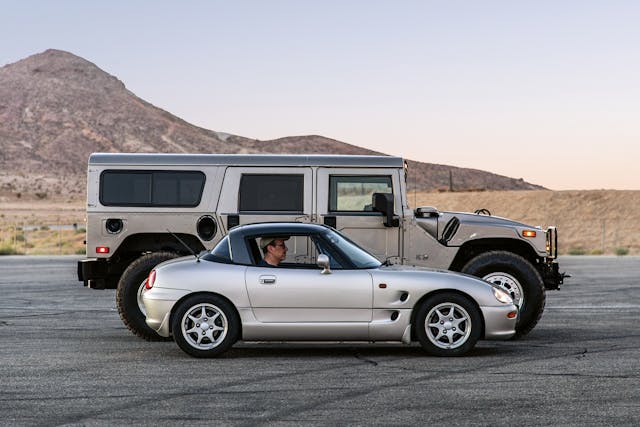
First, its size, which—at 130 inches long and 55 inches wide—fell just within the keijidosha standards but was more than 2 feet shorter and nearly a foot narrower than the export-oriented Miata. Also, instead of canvas, the Suzuki’s roof is composed of three removable aluminum panels and a targa bar that can fold into the body. Thus, the Cappuccino can be a coupe, a T-top, a targa, or a full roadster. And the design was so crafty that the three roof panels neatly pack into a trunk that makes a clarinet case seem vast.

The engine in this first-gen Cappuccino (code name: EA11) is a dual-overhead-cam, 12-valve, turbocharged and port-injected three-banger based on the all-aluminum F6A that Suzuki was at the time shoving into its smallest cars as well as its Japanese domestic Jimny 4×4 (Samurai in the U.S.). Independent upper and lower control arms suspend the 14-inch wheels with their skinny 165/65-size radials. The curb weight was listed as 1543 pounds.
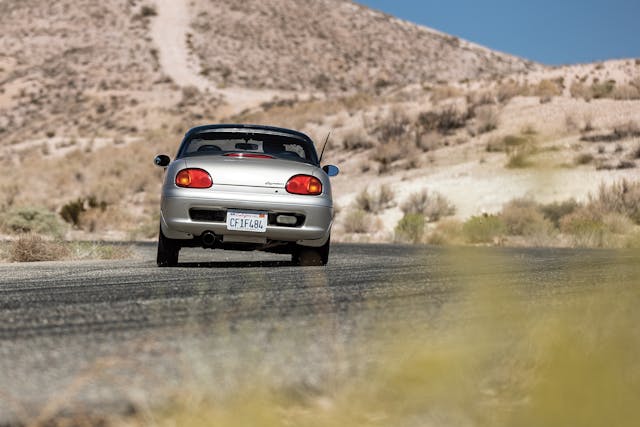
The Cappuccino won’t light ’em up off the line with its advertised 63 horsepower. But once moving, it slaloms a twisty road like a Miata on Atkins, darting at corners with quick steering and a firm ride. The turbo packs usable torque into the lower ranges of the 8500-rpm tach, centrally located in the cluster as it should be. Boost is indicated by a green turbo light—so ’90s—and means that unlike the turbo-free Honda Beat, which also revs to 8500, you don’t have to scream the Cappo to redline in every gear just to keep up with traffic.
Suzuki may have done its job too well; aluminum was used liberally, and the deluxe interior trim, from its contoured buckets to its tilt/telescoping steering to its ruffled, leather-like door panels, probably meant the car was too expensive to turn a profit. Suzuki produced 26,480 Cappuccinos, fully 75 percent of them in the first 2 years, before faddish Japan lost interest and sales tanked in an economy mired by recession. Few have made it to North America, ensuring that this mini-Miata remains a rare sighting. —Aaron Robinson
***
1991 Suzuki Cappuccino
Highs: Among alt Miatas, way more reliable than anything British; standard A/C; flexible roof arrangement; 42 mpg; deft handling; unlikely to see another one at the cars and coffee.
Lows: Anyone over 6 foot need not apply; body and trim bits getting scarce; many have been modified; not as rigid as a Miata, which is why shock braces and underbody shear plates were popular accessories.
Price Range: #1 – $22,000 #2 – $14,000 #3 – $8500 #4 – $4000

HAGERTY AUTO INTELLIGENCE SAYS:
The Cappuccino never got the same attention as its fellow ABC kei cars, the Autozam AZ-1 and Honda Beat. However, demand for this more “practical” kei car is increasing. Imports have outpaced the Beat in recent years and average protected values are increasing at twice the rate of those for the Beat. Millennial and Gen Z enthusiasts submit over 80 percent of insurance quotes, which assures there will be a dedicated following in the future. It’s nearly impossible to find a more interesting car for under $10,000, assuming you can fit in one.
1968–70 AMC AMX
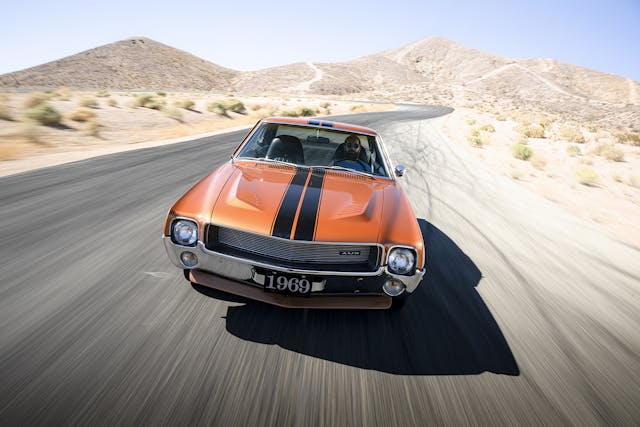
American Motors Corp. lost a reported $12.6 million in 1966 and saw a 12 percent decline in sales. One has to imagine that the Big Three never looked bigger to Kenosha, Wisconsin’s favorite automotive manufacturer. Holding less than 4 percent market share, AMC was a distant fourth, an inconsequential player to the suits in Detroit and by all accounts well on its way to extinction.
And then, like a Hollywood movie, in walked AMC’s hero, one Robert Beverley Evans, known for buying into sick companies and nursing them back to health. Evans knew it also wouldn’t hurt to get some AMCs racing and have a bit of “Win on Sunday, sell on Monday” mojo working in Kenosha. The result of this influence was to take the upcoming 1968 Javelin and make a unique two-seat personal sports car from it. If nothing else, it would draw young buyers into AMC showrooms again. The AMX (American Motors eXperimental) project got the green light in September 1966, with styling derived from the 1966 Vignale-designed AMX I show car. The production car was designed by Dick Teague, and it was a stunner.
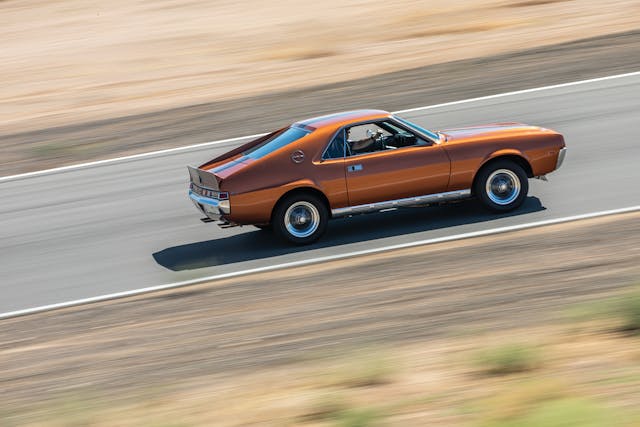
To lose the back seat, 12 inches were sliced from the Javelin, giving it a 97-inch wheelbase. The AMX interior was the same as the Javelin SST’s. Engine choices, unlike in the Javelin, were solely V-8s, with 290-, 343-, and 390-cubic-inch displacements, all paired with either a four-speed stick or an automatic. The AMX had the desired effect; here was a two-seat “sports car,” as was the Corvette, but some $2000 cheaper. It was never designed to be a direct competitor, but the public certainly drew parallels, and AMC wasn’t about to complain.
Every AMX received a serialized dash plaque, a brilliant nod to the “exclusivity” of the AMX. AMC advertised this by saying, “We’re even putting the production number on the dash for collectors …” These plaques inexplicably bore no correlation with the VIN of the car. In any event, the new AMX was the shot in the arm that AMC needed.
Of course, nothing is perfect. The trunnion-style front suspension of the 1968 and ’69 AMX was flawed, the ball joint–style setup that arrived with the facelifted ’70 an improvement. The short wheelbase, combined with diabolically quick power-steering and a big V-8, proved challenging for many. And, of course, the AMX wasn’t immune to the traditional 1960s scourges of build quality and propensity to rust. Over the three years of two-seat AMX production, just 19,134 were built. The best sales year was ’69, the AMX’s first full year, with 8293 rolling out of showrooms.
The 1969 on these pages belongs to Dayna Cussler, and it’s equipped with the 343 and Shift Command Borg-Warner M-11B three-speed automatic. It also has factory power steering and brakes, plus air conditioning. On the inside, a pair of 1970 AMX high-back bucket seats have replaced the low-back originals, while on the outside, an aftermarket front chin spoiler and a rear decklid spoiler lifted from a Mark Donohue Javelin have been added, as well. It’s all very Wisconsin muscle car groovy, baby.
Never destined to have the cult following of the Ford Mustang or the Chevrolet Camaro, the stylish AMX is an underdog at an incredible value compared with any similar big-block muscle car. And as of late, the market is clearly taking another look at these two-seat renegades. —Colin Comer
***
1969 AMC AMX
Highs: The lone two-seat American muscle car; stout powertrains; bang for the buck; never oversubscribed anywhere outside of an AMC meet.
Lows: Will always remain in the shadow of other muscle cars from the Big Three; proven rusters; spotty parts availability; hard to find a great one.
Price Range: #1 – $52,800 #2 – $34,500 #3 – $22,500 #4 – $13,500

HAGERTY AUTO INTELLIGENCE SAYS:
The AMX is the other two-seat American performance car of the 1960s, and though its appreciation lags behind other muscle cars, younger enthusiasts are increasingly shopping for it. Appreciation since 2019 for the AMX was 28.8 percent, which is behind the ’67–69 Camaro (up 40.5 percent). However, interest from next-generation enthusiasts has nearly tripled since 2019, from a share of 13 percent to 38, suggesting further appreciation is likely.
2004–10 Mercedes-Benz SLR McLaren
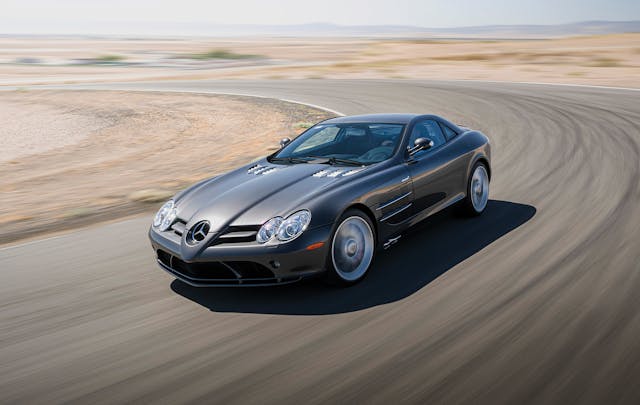
This car had an ugly birth. In the late 1990s, Mercedes harbored grand visions of a modern 300 SLR Uhlenhaut coupe, with long GT legs and enough power to shred space-time. Development and racing partner McLaren had other plans; as designer Gordon Murray’s second production car, he wanted the forthcoming Merc-Laren to be a light-ish, naturally aspirated, mid-engined McLaren supercar with a Mercedes heart.
Mercedes didn’t. The car was to have a front engine—no exceptions—and it was to use the beefiest supercharged V-8 that AMG could summon. Amid early development, Murray flew to Stuttgart weekly for six months to reach an agreeable compromise for the production car.
The result is a transcontinental hyper-GT cruise missile whose personality is neither Mercedes nor McLaren, despite plenty of effort from both sides. It was give-and-take the entire way; the supercharged engine was heavy, but Murray shoved it back a full meter to transform the layout to front-mid-engine. McLaren built the car around what Mercedes claims is the first full carbon-fiber monocoque on a production car, with full carbon bodywork that saved 440 pounds over the equivalent in steel, but Mercedes insisted on a fully leather-lined interior pulled from the SL and SLK.
The production SLR dropped for the 2004 model year with a throat-closing $455,000 price tag and a 207-mph top speed, both enough to inextricably tether it to the contemporary Porsche Carrera GT, Ferrari Enzo, and Ford GT. Nearly two decades later, most of this company cruises at or above the seven-figure waterline, while the just-as-fast, just-as-exotic SLR can be had for a (relative) pittance.
It might be the world’s most underappreciated hypercar, if there could be such a thing. But what’s not up for debate is the SLR’s spectacular powertrain. “The dominant character of that car is the motor. It’s unlike any other Mercedes engine I’ve ever driven,” says Hagerty video host Jason Cammisa. “The engine feels rigidly attached to the chassis—you feel all kinds of vibrations, and it’s all good.”
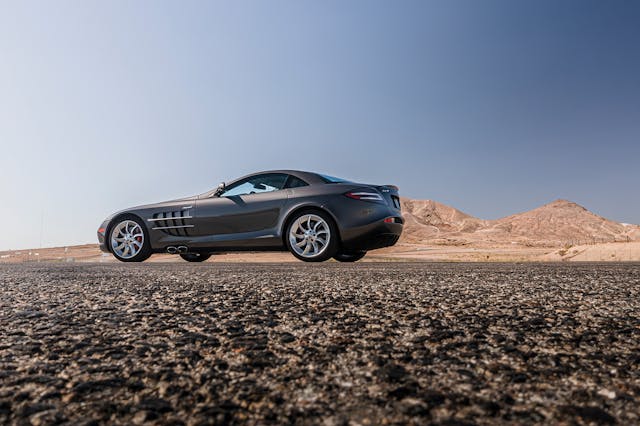
The SLR’s M155 V-8 spins out 617 horsepower and 575 lb-ft of torque, enough power and twist to turn all of Merc’s existing transmissions to spaghetti save its remarkably stout five-speed automatic. No manual was offered, but Cammisa reckons the traditional automatic only snaps the SLR’s jumbled personality into focus. “It’s very much a muscle car, between its soundtrack and its torque converter automatic,” he says. “It’s a German Viper! The driving position is the same, the seating position is the same, and you’re sitting on the rear axle.” Even with undefeatable stability control, it’s a lairy drive. “At 8/10ths, it’s nibbling at the tires,” says Cammisa.
Mercedes earmarked production of 3500 cars over seven years—just enough to break even—but six model years and five variants begat only 2157 sales. For some enthusiasts, the SLR scratches an itch that no other car can. According to McLaren, most SLR owners have more than one in their garage, using them on a regular basis for crushing long miles and roaring through rallies.
Can you blame them? —Conner Golden
***
2006 Mercedes-Benz SLR McLaren
Highs: The most visually striking and usable supercar to emerge from the 2000s; McLaren still offers support and upgrades for the SLR, with an active owner group; its 5.4-liter is likely the best V-8 to ever come from Mercedes.
Lows: Brakes are difficult to moderate smoothly; interior is not as nice as the price suggests; stiff ride and heavy steering conflict with hyper-GT positioning.
Price Range: #1 – $430,000 #2 – $356,000 #3 – $276,000 #4 – $199,000
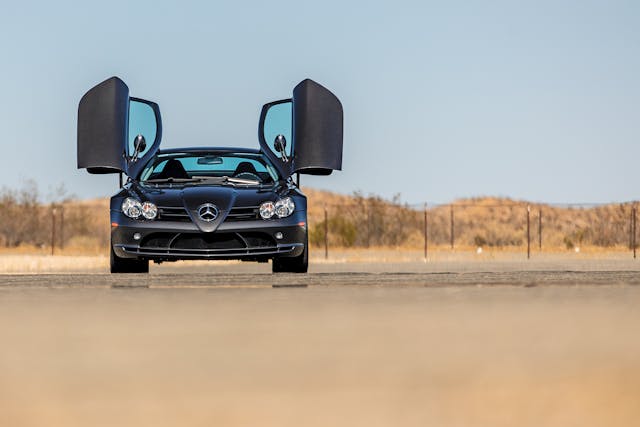
HAGERTY AUTO INTELLIGENCE SAYS:
Compared with similar vehicles of the era, the SLR McLaren looks like a bargain. While values for the Porsche Carrera GT have more than doubled since 2019, the SLR has increased a modest 37 percent. The SLR has long held a large premium over its spiritual successor, the SLS, but the value gap narrowed to only 7.4 percent in July 2022. In the third quarter of 2022, the SLR premium widened again, to 23 percent, with younger buyers fueling much of the demand. Boomers still own the majority, but millennial ownership share is increasing at twice the Hagerty average.
1984–88 Toyota Pickup 4×4 SR5

By the time the second-generation Pickup (Hilux in other markets) hit dealership lots in 1984, Toyota’s reputation for creating quality small trucks had solidified. Much of the new Pickup’s mechanical bits—like Toyota’s legendarily reliable 22R 2.4-liter four-cylinder, solid-front-axle suspension, and transfer case—were carried over from the prior generation. However, the second-gen Pickup donned more aggressive sheetmetal, replete with blistered fender flares, square headlights, and a contemporary grille. Most of the collector buzz revolves around the four-wheel-drive models with the SR5 package, but the Pickup was available in a plethora of bed, cab, and drivetrain configurations.
The Pickup recipe didn’t change much throughout its four-year production run. On 4×4 models, the 22R engine gained fuel injection in 1985 and an optional turbocharger in 1986. The live-axle front suspension was phased out in ’86 and exchanged for an independent front suspension with torsion bars. No ground clearance was lost in the transition, but hardcore off-roaders prefer the stick axle. In 1988, the truck’s last model year, Toyota ditched the top-of-the-line turbo engine for a 3.0-liter V-6. By the end of its production run, Toyota had moved over 1.5 million of its second-generation Pickups in North America alone.
Alan Dreiman became enamored with the Pickup by way of one of his favorite films, Back to the Future. As a young enthusiast, he lacked the funds for a DeLorean, so he bought an ’85 Toyota Pickup, the same model year as the fictional Marty McFly’s black example. Dreiman’s first Pickup kicked off an eight-year journey of buying, restoring, and selling these trucklets as a side gig. He reckons that 1980s nostalgia is the driving factor for rising Pickup values, as most of his clients are Gen Xers.
Finding a good Pickup can be a challenge. Although the mechanicals—apart from the engine’s timing-chain guides—are stout, the body panels and interior parts do not stand the test of time. Road salt turns northeastern Pickups to dust, and sun exposure in the South causes interior plastics to become brittle and seat fabric to fade. Patch panels are available to fix rusty trucks, but replacements for broken interior pieces and worn fabric are no longer available. According to Dreiman, the best second-gen pickups are found in the Pacific Northwest due to the lack of both road salt and oppressive sun.
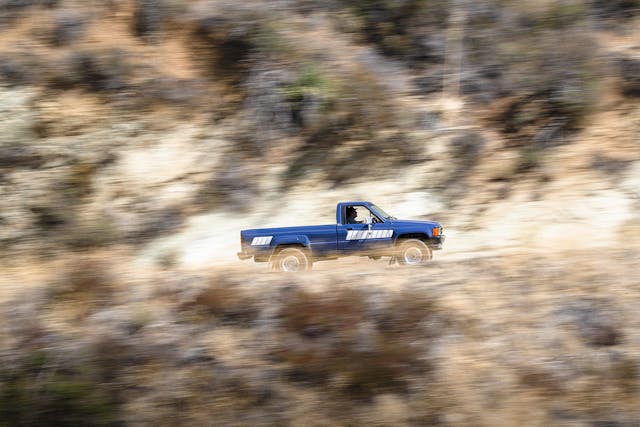
He appreciates the versatility of Toyota’s small truck, claiming the stock suspension can handle any off-road excursion within reason while not being unbearable on the street. “You can daily-drive one and then take it up a mountain the next weekend,” he says. Generating only 116 hp from its 22R-E engine, this Pickup is far from fast, but that doesn’t bother Dreiman. The simplicity of the drivetrain and ease of maintenance are more important virtues than acceleration.
If you are an enthusiast looking to jump into the world of vintage 4x4s but you don’t have the funds to buy an FJ40 Land Cruiser or an early Ford Bronco, the second-generation Toyota Pickup hits the sweet spot of affordability, great looks, and off-road credibility. —Chris Stark
***
1985 Toyota Pickup 4×4 SR5
Highs: Reliable as a Swiss watch; rugged good looks; off-road prowess.
Lows: As fast as a Swiss watch; proclivity for rust; most were used for truck stuff, so finding a good one is difficult.
Price Range: #1 – $34,800 #2 – $22,700 #3 – $16,700 #4 – $6600

HAGERTY AUTO INTELLIGENCE SAYS:
Long considered just a used truck, Toyota’s fourth-generation Pickup has finally achieved collector-car status. The number of them added to Hagerty policies has quadrupled since 2017, with younger collectors as the fastest-growing segment. Although boomers currently own 43 percent of them, collectors under 40 more than doubled their ownership share since 2019, from 7 percent to 16. A nearly equal third of insurance policy quotes come from boomers, Gen X, and millennials.
2001–10 Lamborghini Murciélago

It’s said that Murciélago the feisty bull endured 90 blows from the matador’s sword before he was spared from slaughter and sent to the famous Miura stud farm to beget a line of little bulls with bad attitudes. Speaking of prominent lineage, Murciélago the Italian sex-wedge was a direct descendant of the Lamborghini Diablo, Countach, and Miura, which means there were high expectations when it launched in 2001. With 571 horsepower from a 6.2-liter V-12, the requisite scissor doors, self-levitating air scoops, and the very baddest of attitudes, the new Lamborghini lived up to its heritage. However, even people who travel in their own private 747s have needs, and the Murciélago (say “mercy-ell-a-go”) answered criticisms of past Lamborghinis by providing certain luxuries like outward visibility and working A/C. It also had superior chassis dynamics with sharper helm response and less of the notorious understeer that dogged the Diablo.

Don’t get us wrong; the Murci was still almost 2 full tons of raging Latin libido—but wrapped in a little more velvet. And now the Murciélago has followed the path of its predecessors by bouncing from a rapidly depreciating used supercar into an appreciating classic. Its course was set when Lamborghini became a colony of the mighty Volkswagen Group in 1998. Fully functioning prototypes of a Diablo evolution called the Canto were fed to the shredder, and work began on a road-to-roof replacement of Lamborghini’s flagship. More interior space, a more logical dashboard, more power, and better handling were all priorities.
As production continued throughout the 2000s, Lamborghini kept tweaking the Murci and introducing variants such as the open-top Roadster and 40th Anniversary Edition. In 2006, it launched the LP640 you see here, with larger side scoops and a goggling monopipe for an exhaust. As it did when pasted on the original Countach, LP means longitudinale posteriore, a reference to the engine’s longitudinal location behind the seats, and 640 a rounding of the upsized 6.5-liter V-12’s rated 632 horsepower.
Strapping yourself into a Lamborghini with an 8500-rpm V-12 is like crawling into Keith Richards’s Fender Telecaster for a set at the Garden. The feral bark at startup is a prelude to the werewolf yowl the engine achieves when it goes on cam around 4000 rpm. Ferrari never made a berserker quite like this, and nobody makes one quite like it now, ever since turbocharging and electrification took over the sex-rocket trade. Especially when you factor in the Murci’s rare six-speed manual transmission, a relic of the pre-paddle past when anyone who wanted to go fast needed to know how to work a clutch. It’s thought that perhaps fewer than 25 manual LP640s came to the States.
The Murci’s shifter glides easily on triple-cone synchros through its stainless-steel gate. The same transmission was used in the Audi R8 and a few others, perhaps the highest evolution of a supercar manual before it all ended in microchips. Microchumps, we say. It’s worth spending the time and (significant) extra cash to get a Murci with the buttery stick shift. It is, as they say, the full Monty—er, Murci, and that’s no bull. —Aaron Robinson
***
2007 Lamborghini Murciélago LP640
Highs: Doors that swing up instead of out; a V-12 that revs to 8500; the (remote) possibility of acquiring a manual; makes your kid an instant celebrity at the school drop-off zone.
Lows: Italian fragility; needs regular conjugal visits with a gas pump; you must enjoy getting your picture taken at all hours and speeds.
Price Range: #1 – $382,000 #2 – $323,000 #3 – $262,000 #4 – $191,000

HAGERTY AUTO INTELLIGENCE SAYS:
The rush to find analog supercars with manual transmissions overlooked the Murciélago. Shifting owner demographics suggest this is slowly changing, but a couple of big sales could change the perception of the Murci quickly. Values for the Murciélago are up 48 percent since 2019 but have lagged behind those of cars like the Porsche Carrera GT, which doubled in value over the same period. As next-generation enthusiasts are a growing share of owners (approaching 2/3), values for the Murciélago appear poised for more appreciation.
2003–08 Nissan 350Z

Performance-wise, 1996 began seven long years of darkness for Nissan. The fast, pretty 300ZX had ended its production, and there wasn’t much in Nissan’s U.S. portfolio to interest the power-hungry. The wait was on for the next Z, and briefly, it seemed as though Nissan had minimal interest in a meaningful revival of its most heralded model.
It took until 2002 for Nissan to introduce the 2003 350Z, and it was deserving of the name. Rave reviews followed. Automobile magazine named it Automobile of the Year, and Car and Driver named it to its 10Best, calling it “a re-creation of the segment-busting Datsun 240Z that set the sports-car world on its ear in 1970.” Segment-busting or not, sales were strong, especially after a roadster version debuted for 2004. The coupe was offered with a complicated roster of Base, Enthusiast, Performance, Touring, and Track versions, while the roadster came only in Enthusiast and Touring.
Power came from a 287-hp version of the versatile VQ35DE 3.5-liter V-6, and manual and automatic transmissions were offered. The so-called Rev Up engine with upgraded internals and a bump to 300 horsepower appeared in the 2005 Track model, and in 2007, it was boosted to 306 horsepower for all models.
Nissan was back on the performance radar, but it wasn’t until late in the 2007 model year that the company really cashed in on America’s fascination with NISMO, the name of Nissan’s performance tuning division in Japan. The golden child of the 350Z lineup, the 2007–08 Nissan 350Z NISMO is by far the most valuable model today.
The NISMO Z had the stock 306-hp V-6, but the rest of the car was blessed with a long list of performance and trim upgrades, such as a front spoiler and an aggressive rear wing. It also included forged alloy wheels, Brembo brakes, NISMO-tuned suspension bits and pieces designed by Yamaha, a tuned exhaust, a six-speed manual, and a viscous limited-slip differential. Little faster in a straight line than the base car, the $38,070 NISMO Z sold out its modest run of 1607 copies, and that ended the 350Z. As it was then, the NISMO Z is still hard to find.
Steve Ellis of Los Angeles was living in Texas when he found his 2008 Nissan 350Z NISMO in San Antonio. With 130,000 miles, “It was in pretty rough shape, but it had a clean title, and like all of us, it just needed some love and attention.” The NISMO Z was an excellent track-day car from the factory, but Ellis added bigger tires and wheels, refreshed the suspension with solid bushings and an adjustable linkage, and gave it “a little more aggressive alignment that helps on track days.”
The nearly trouble-free car has since had plenty of track days, autocrosses, and just plain driving—all of which has added more than 70,000 fresh miles to the odometer. “My main takeaway was astonishment at just how solid it felt, even with the incredible 204,000 miles on the clock. The rest of us had similar reactions,” says Joe DeMatio, senior content manager.
Whether you choose a Base 350 or a NISMO variant, it’s hard to go wrong with one of these Zs. “They’re just good, solid cars,” Ellis says. —Steven Cole Smith
***
2008 Nissan 350Z Nismo
Highs: Commendable reliability; crisp performance on track; tons of aftermarket equipment available.
Lows: Not exactly roomy inside; outward visibility submarine-like; engine a little underpowered; climbing resale value will likely move it out of the “affordable” category.
Price Range: #1 – $55,000 #2 – $39,900 #3 – $32,800 #4 – $16,400
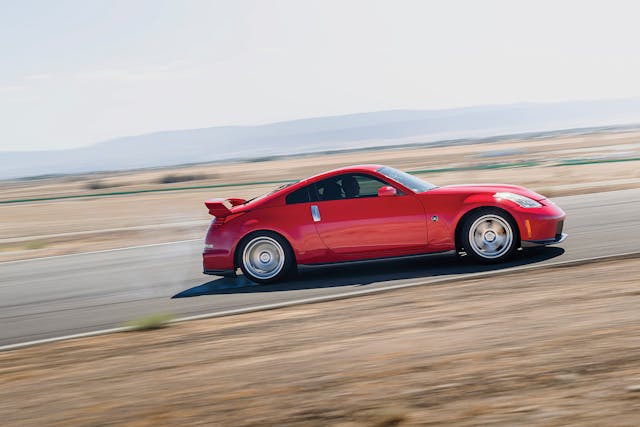
HAGERTY AUTO INTELLIGENCE SAYS:
With the release of a new Z, collectors are likely to go back through the old catalog. The 350Z has previously been overlooked by the market, with values lagging behind earlier Zs until only recently. Average #2 values for the 350Z have increased 78 percent since the start of 2021—the largest increase for any Z aside from the 1978–83 280ZX, which doubled in that time. Boomers still own the majority of 350Zs, but 19 percent of new policies added in 2022 were from buyers under 40.
1936–47 Harley-Davidson Knucklehead

Among the many American motorcycle manufacturers that existed before World War II, Harley-Davidson emerged a victorious survivor. It was with its first production overhead-valve motorcycle, the 1936 E/ES/EL (later known as the Knucklehead due to the shape of the valve rocker covers) that Harley sealed that victory. With that series, the company set out to fix the problems and the dirty image of previous motorcycles, such as the side-valve models with their total-loss oil systems that dumped the black stuff on the roadway. Harley turned to overhead valves and 61 cubic inches to create a cross-country touring machine.
The Knucklehead was available in three versions from 1936 to ’38: The E, with 37 horsepower; the ES, for sidecar use; and the EL—the “hot” version—with 40 horsepower due to higher compression. When buyers saw more horsepower, they paid for it, and in 1938, Harley dropped the E model from the lineup. That makes an E Knucklehead one of the rarest and most desirable models today.
The war ended civilian production for a time, and the last of the Knuckles was produced in 1947, before the new bike, later referred to as the Panhead (the valve covers looked like pie pans) was introduced in 1948.
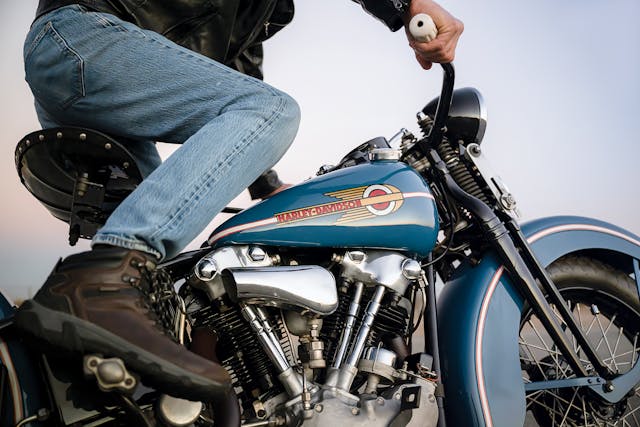
Throw a leg over this low and long cruiser and understand what freedom and rebellion meant when your grandfather was in knee pants. Once you get it kick-started—that can be a workout when the bike is cold or, indeed, hot—the engine does the classic potato-potato while your bottom settles into the single seat like it’s a leather diaper. A brace of springs underneath (along with the balloon tires) serves as your only real isolation from the road. It’s an iron machine for iron riders, not heavy by today’s standards or even very fast, but boy does it make an entrance. Gear selection is via a shifter next to the tank, while the clutch and brake controls all reside in unfamiliar locations. Even if you’re a veteran of the twist-and-lean, it’s best to do your first miles on this one in a parking lot, away from traffic.

The Knucklehead is a bike that bends the norms in a market that is underappreciated by younger buyers. However, the motorcycle market doesn’t act like the car market. Although 1940s cars aren’t blossoming, 1940s American bikes have strong appeal to a surprisingly youthful audience, making them sound investments. The main competitor to the Knucklehead is the 1940–53 Indian Chief, a swooping beauty whose value is nearly a third of what a Knucklehead brings. The Harley brand itself is the difference; Hagerty data shows that the brand resonates far more with the younger audience, and a Knucklehead owner is more than twice as likely to be a millennial or Gen Z than is an Indian Chief owner. And they’re actually likely to quote a Knucklehead at a value higher than a boomer four out of five times. Surprise, there’s something about that sensory experience and mechanical art that younger buyers love. Go ahead—ride one and you’ll understand. —James Hewitt
***
1938 Harley-Davidson Knucklehead
Highs: A solid and stolid hunk of genuine Americana; quicker than just about any car you could have from 1938; consistent youth appeal means the long-term investment prospects look bright.
Lows: No push-button start; can be as cantankerous as any 80-year-old; unfamiliar controls from before everything was standardized.
Price Range: #1 – $143,000 #2 – $101,000 #3 – $68,800 #4 – $46,600

HAGERTY AUTO INTELLIGENCE SAYS:
Harley-Davidson resonates with enthusiasts of all ages, and this interest propels the Knucklehead to a starring role among WWII-era motorcycles. Knucklehead owners are nearly three times more likely than Indian Chief owners to be under 45 years old. And those younger enthusiasts aren’t bottom-feeding—they are insuring Knuckleheads for 15 percent more than boomers are. Young buyers clearly preferring one model over another and paying more for it? A recipe for success in a market that would be shocked to see them reaching for anything other than sport bikes and supercars.
1992–06 AM General Hummer H1

Lorenzo Detoma has nothing against technical advances. But in his 2002 Hummer H1, he finds they aren’t mandatory. “One of the things I love is how analog it is in this digital world,” he says. “The only digital piece of equipment on the whole vehicle is the odometer. It feels like a tank when you drive it, stable and confident.”
Perhaps that’s because the Hummer H1 is based, of course, on the military’s High Mobility Multipurpose Wheeled Vehicle (HMMWV), or Humvee for short, which probably had more in common with a tank than with your average SUV.
When AM General initiated sales to civilians beginning in 1992 with a modest 316 that year, it had toned down the military-ness, but only a little. The H1 is, after all, the only vehicle in the 2023 Bull Market lineup that has big steel loops coming out of the hood, left over from where the military attached a parachute so they could launch Humvees out of the back of C-130s.

As a poster child for Operation Desert Storm, aided by the fact that Arnold Schwarzenegger owned five of them and wasn’t shy about showing them off, the vehicles slowly began to find a market with serious hunters and off-roaders, with rural residents who liked its capability, and with posers who liked the image.
Buyers liked the utilitarian, no-frills H1’s status, but they paid for it. A typical one would carry a base price of about $93,000, and a list price of $110,000–$115,000 depending on the equipment optioned.
In 2001, AM General and General Motors, which had bought the rights to the name, agreed to badge the H1 as a Hummer, thus launching it as a brand. Power for all but one year of the civilian H1 came from a 6.5-liter turbodiesel, with 195 horsepower (later 205) and 430 lb-ft of torque. The powertrain, with the four-speed automatic, wasn’t EPA-rated due to its weight.

Still, as the word began to get out, sales peaked at 1432 in 1995 and remained fairly strong until a sag to just 252 in 2004. They rallied to 729 in 2006, the last year of H1 sales and the only year the GM-freshened Alpha model was offered. The Hummer Alpha is the holy grail of H1s, and it is by far the most valuable. GM equipped the Alpha with the company’s livelier 300-horse 6.6-liter Duramax diesel, along with a five-speed Allison transmission. It was better than the tired powertrain it replaced in every way.
Detoma has had his H1 for about five years and uses it frequently for off-roading near his home in Glendora, California. Other than routine maintenance, all he’s done is add front- and rear-mounted cameras. “It’s so competent off-road,” he says. “You feel like you can conquer anything.”
“The takeaways for me were the talkative diesel and the distance between the seats,” says Jason Cammisa, Hagerty video host. “It’s not long, but the thing is so wide that it’s comedic. The Hummer is the sort of thing you’d love to hate, but it’s so cool and endearing that you can’t.” —Steven Cole Smith
***
2002 AM General Hummer H1
Highs: Pretty much indestructible; superb off-road; old-school cool; feels downright patriotic to drive.
Lows: Fuel mileage could cost you your Sierra Club membership; engine sounds like a jackhammer inside the cockpit; no airbags; around 7500 pounds, so damned heavy.
Price Range: #1 – $146,000 #2 – $118,000 #3 – $78,900 #4 – $44,300

HAGERTY AUTO INTELLIGENCE SAYS:
With the new EV Hummer selling for mega bucks, enthusiasts are seeking out excellent examples of the original mega truck. Gen Xers (the biggest fans of collectible SUVs) own over half of all H1s protected by Hagerty, but millennial ownership is up since 2020, to almost a third. Meanwhile, appreciation since 2019 has lagged, with an increase of only 9.9 percent. All of which points to faster appreciation for the H1.
2001–04 Chevrolet Corvette Z06
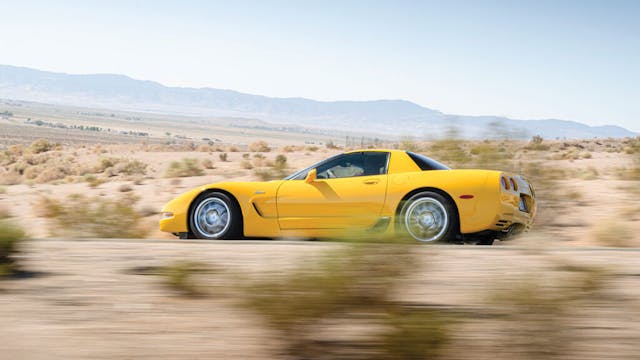
High-performance Corvette variants often came with some baked-in sacrifice: a heavy big-block hobbling chassis balance or racetrack handling at the expense of ride quality. That all changed with the introduction of the C5 Corvette Z06 in 2001.
At its core, the base C5 platform’s stiff hydroformed frames and rear transaxle layout maximized interior space and everyday usability while also paying dividends for weight balance and rigidity. Chevy opted to base this performance Vette on the C5 hardtop rather than the heavier and more flexy hatchback coupe. Hung with firmer suspension components and stickier, non-run-flat rubber, the C5’s cornering capability swelled to near-supercar levels. Hot-rodding the base car’s LS1 V-8 into the 405-hp LS6 yielded a formidable 4.0-second 0–60 hustle. Even now, the Z06 meets an array of buyers on their turf—it’s as happy on a relaxed cruise as it is beating up on cars half its age during a track day.

Speaking of track days, the Z06 looks the part, sporting several performance-oriented design cues. The notch-back greenhouse, aggressive wheels, brake ducts, mesh intake screens, and subtle badges convey a more serious, capable presence than entry-level C5s. Slide behind the wheel and the Z06’s controls, though decades old, feel current and precise. The brake pedal is firm, and each long mechanical throw of the shifter conveys that you’re wrangling 405 horses. This is no Miata shifter. Although appearing thin and delicate for the car, the steering wheel’s weight is firm but not overly heavy, and behind it are easy-to-read gauges with an attractive depth to them.
Fire it up, pop the easily modulated clutch, and the Z06 squats back on its haunches while roaring to its 6500-rpm redline. It has theatrics to accentuate its pace. There’s more roll and pitch than in younger sports cars, but suspension motions are well controlled and it never feels unwieldy. Once you’ve gotten some fun out of your system, the Z06 is a pleasant, docile road-tripper, idling down the highway at under 2000 rpm.
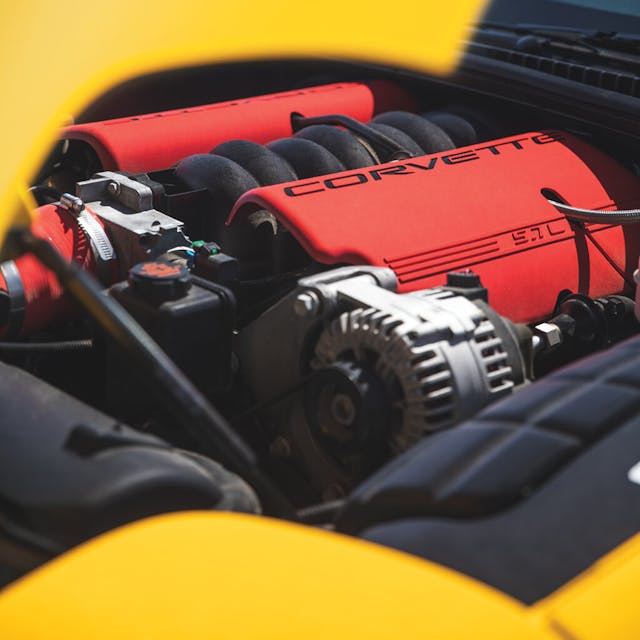
“Before I bought this Z06, I didn’t realize how smooth they were on the open road,” says owner Chuck Brown, who bought the car from a friend in 2018. “My wife and I enjoy it for Sunday drives to the beach or through the California mountains. We love the power and handling, but also how relaxed and comfortable the Z06 can be.”
Unsurprisingly, enthusiasts of all ages enjoy that versatility, as cross-generational appeal has driven the C5 Z06’s recent appreciation. And word is getting out on something Brown discovered four years ago: The C5 Z06 offers the sports car experience without the typical penalty of high cost. At least, for now anyway. —Eddy Eckart
***
2003 Chevrolet Corvette Z06
Highs: Excellent engine and exhaust note; capable and not overly stiff suspension; returns nearly 30 mpg if you keep your foot out of it; there are plenty out there at a wide range of prices.
Lows: Seats aren’t supportive enough for aggressive driving; development spent less time on the interior finishes than on the rest of the car.
Price Range: #1 – $49,300 #2 – $34,300 #3 – $25,600 #4 – $13,600

HAGERTY AUTO INTELLIGENCE SAYS:
The C5 Z06 has all the early indicators of increased demand. Lookups on Hagerty Valuation Tools have more than tripled since 2021. An equal share of insurance quotes come from boomers, Gen X, and millennials, showing that demand is spread evenly throughout the market. New buyers are paying a premium for the best examples; #1 condition cars have increased 24 percent since the start of 2022, while #4 condition cars have dropped 17 percent.
2008–15 Audi R8

It’s easy to forget what a trainwreck Lamborghini was through the 1970s and up until 1998, when Audi bought the Italian carmaker for a trifling $110 million.
The first offspring of this relationship was the Lamborghini Gallardo, with a mid-mounted 5.0-liter V-10 good for 493 horsepower. Audi was next, using the Gallardo as the basis for its first supercar, the R8. Under its aluminum skin, the R8 shared mechanical bones with the Gallardo, its aluminum spaceframe similar but a sort of second draft that improved stiffness and lowered cost. The two cars also shared the Quattro all-wheel-drive system, with power sent to the front wheels via a viscous coupling. Transmission choices were either a six-speed manual or a computerized, paddle-shifted R tronic automatic. Initially, the R8 used the 420-hp, 4.2-liter V-8 from the Audi RS4; the Lambo’s V-10 was offered later. A glass panel makes it easy to admire the engine with the lid closed, and nifty LED lighting illuminates it at night.

Open the driver’s door and you see immediately what makes this car so deeply desirable—a manual shifter sprouting from a metal gate. The R8 is the last production car available with that quintessential Italian design motif, which dates to numerous classic Ferraris as well as other vintage Lambos. But the R8 is cheaper than those by a bunch. That shift lever is made from milled aluminum and is lovely to use. Clack-clack through its gates quickly enough and with the V-8, you’ll hit 60 mph in 4.3 seconds, just 3.2 seconds with the V-10.
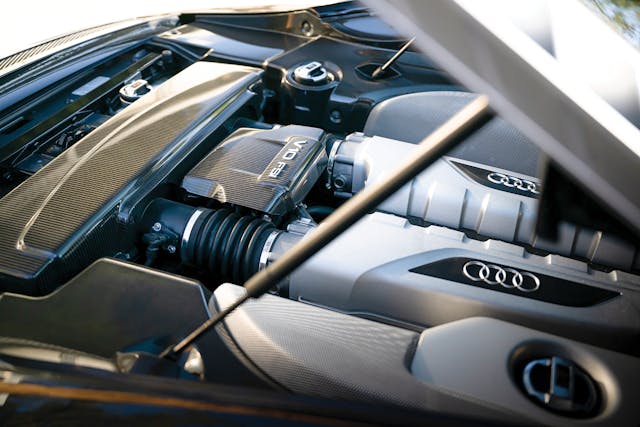
With a front-to-rear weight distribution of 44/56 percent, the R8 avoids the inherent understeer associated with most all-wheel-drive cars. The torque split is biased toward the rear, with never more than 35 percent of power going to the front tires. The car’s 104.3-inch-long wheelbase (almost a foot longer than the same-vintage 911’s), means the R8 interior has more leg-, shoulder-, and headroom than a 911 or even a Mercedes SL of the period. Bonus: There’s room behind the seats for a pair of golf bags.
On the exterior, the R8 rounds off the sharp, angular edges of its Gallardo cousin, and it bulges muscularity in all the right places. Time has done little, however, to soften the visual impact of the fixed panels behind the doors that Audi named “side blades.” Available either in colors that contrasted with the body or in carbon fiber, they remain controversial, some loving this avant-garde flourish, some thinking they give the R8 a heaviness to its profile and impede rear visibility.
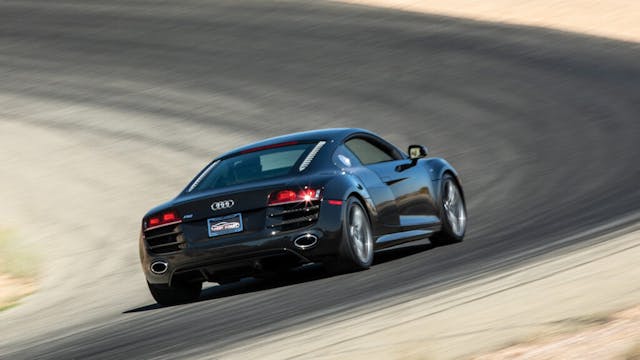
From behind the steering wheel, the traditional round dials remind you of how simple and straightforward instrument panels were before digital gimcrackery ran rampant in vehicle interiors. All three pedals are well placed, and the flat-bottomed steering wheel tells you how well the front tires sprechen with the road when you’re hustling the R8 through corners. With supercar performance paired with the livability of a daily driver, the Audi R8 might just be the collector car to have if you could only have one.
Leave it to the Germans to make the perfect Italian car. —Kirk Seaman
***
2011 Audi R8 5.2
Highs: Italian performance with a German accent; beautifully balanced handling; did we mention the gated shifter?
Lows: Controversial profile; poor rear visibility; R tronic automatic to be avoided.
Price Range: #1 – $216,000 #2 – $172,800 #3 – $118,000 #4 – $91,500
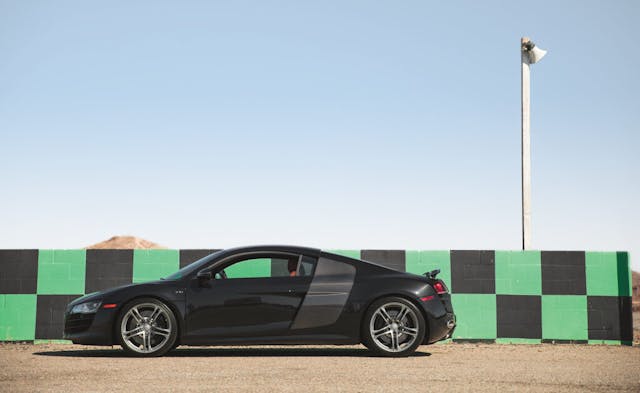
HAGERTY AUTO INTELLIGENCE SAYS:
All generations of enthusiast appreciate the R8, and interest is growing. Insurance policy growth is more than three times faster than the Hagerty average over the past five years. Lookups on Hagerty Valuation Tools have doubled in the past 12 months, and they lead lookups for the similar Lamborghini Gallardo. R8 values are up 37 percent since 2019, and with growing demand, further appreciation is likely.
***
2023 Bull Market List: Five takeaways
- The 1980s and ’90s are officially hot, with good survivors bringing premium money from Gen X and Gen Y collectors.
- The 1930s through 1950s are chilly … except for motorcycles. Pretty much everyone finds an old Harley cool.
- Preserving new cars for future collectibility wasn’t a thing until the 2000s. Those cars are now coming out of the woodwork.
- High-performance vehicles have high-performance needs. Be prepared for big fuel, maintenance, and tire-replacement bills.
- Old trucks ooze authenticity and are the antidote to the digital-overload-pretend-toughness of today’s crossovers.
Editor’s Note: As always, the 10 cars and one motorcycle that make up the 2023 Bull Market List are those we believe are poised for growth. To arrive at these predictions, the Hagerty Automotive Intelligence team uses some of the most exhaustive data in the industry—price guide research, owner demographics, private sales, public auctions both online and in person, and import/export numbers. Our goal is to help you benefit from up-to-date research in order to make an informed purchase now and a profitable sale later.
***
Huge thanks to all the generous owners and dealers who allowed us use of their vehicles this year: John Akopyan, Chuck Brown, Classic Avenue, Dayna Cussler, Lorenzo Detoma, Alan Dreiman, Steve Ellis at Toprank Importers, Tim Graber at Classic Motorcycle Consignments, Ria Levine, and West Coast Exotic Cars.
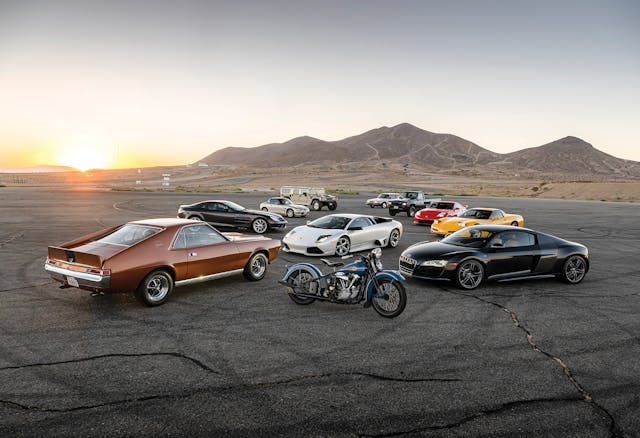








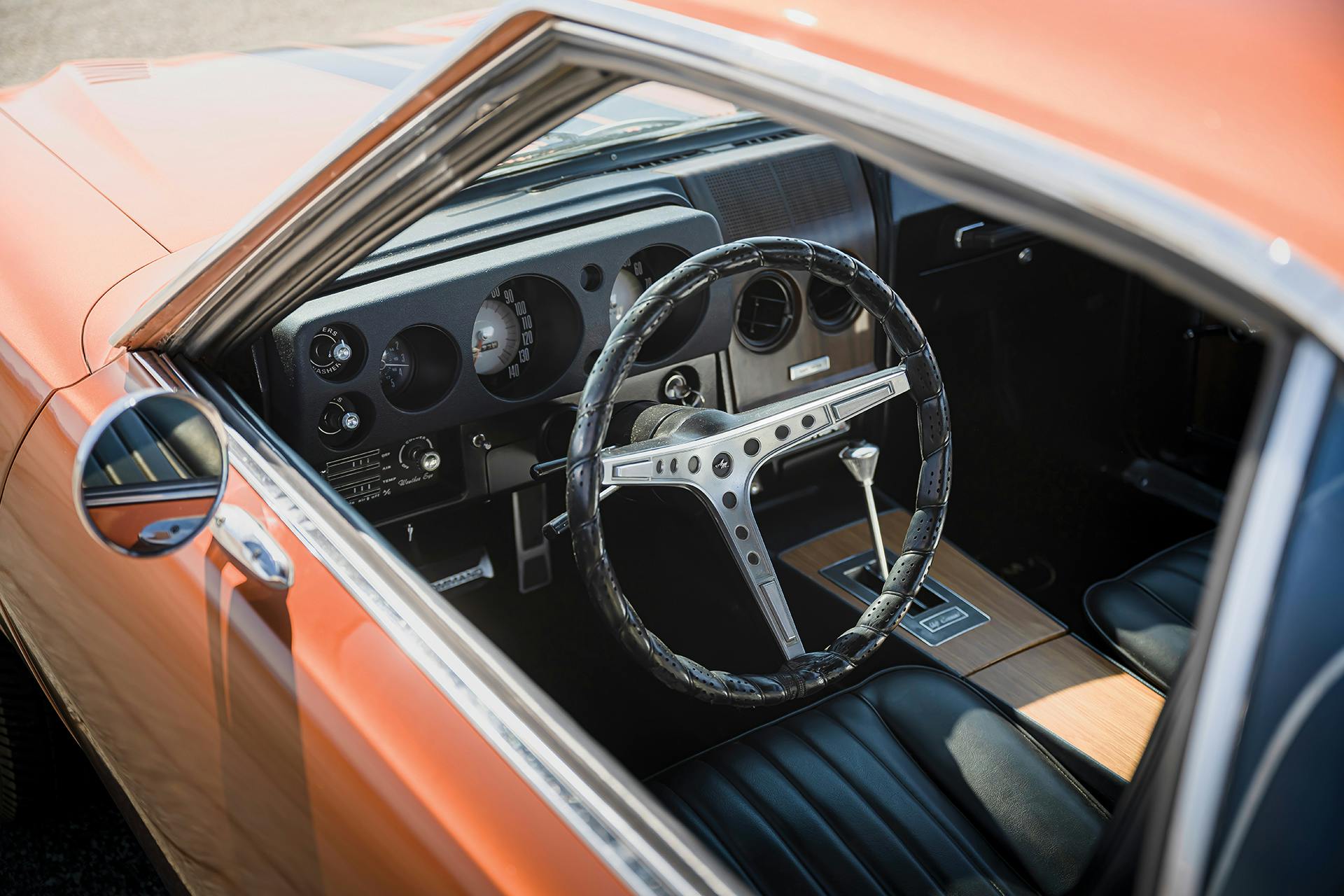
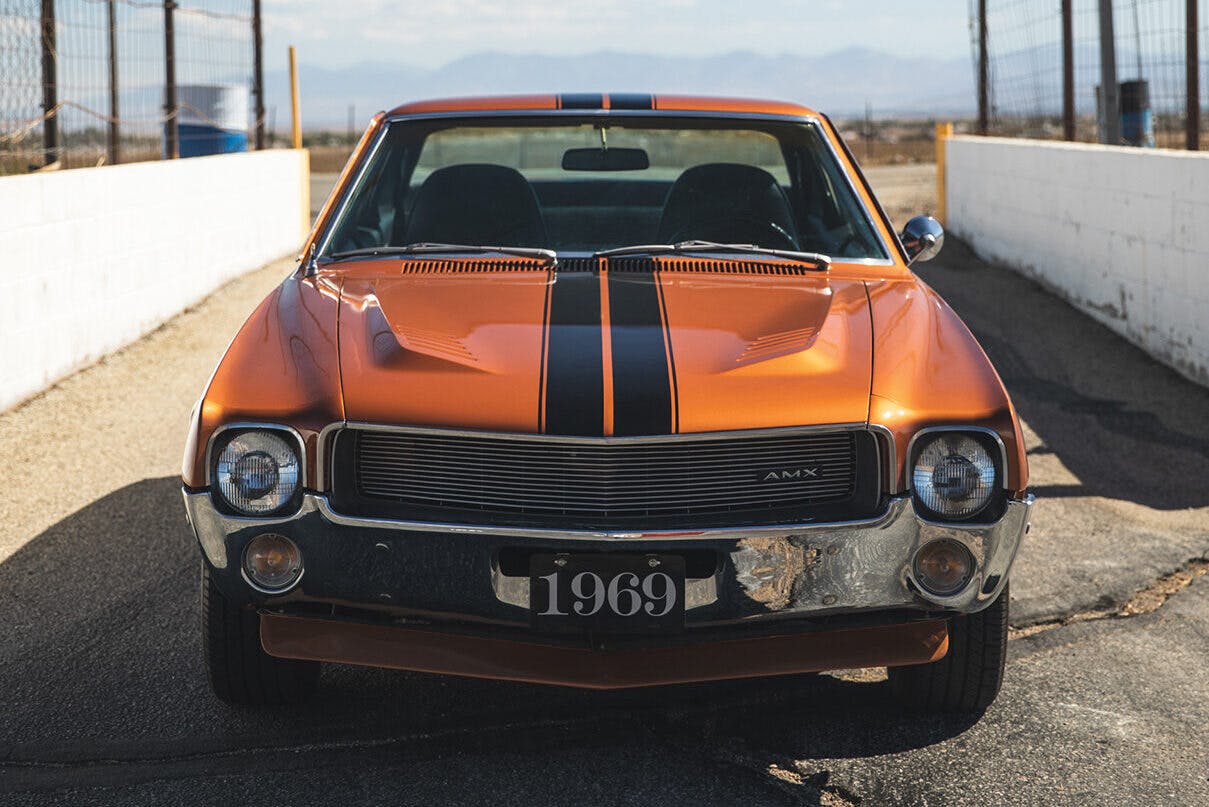
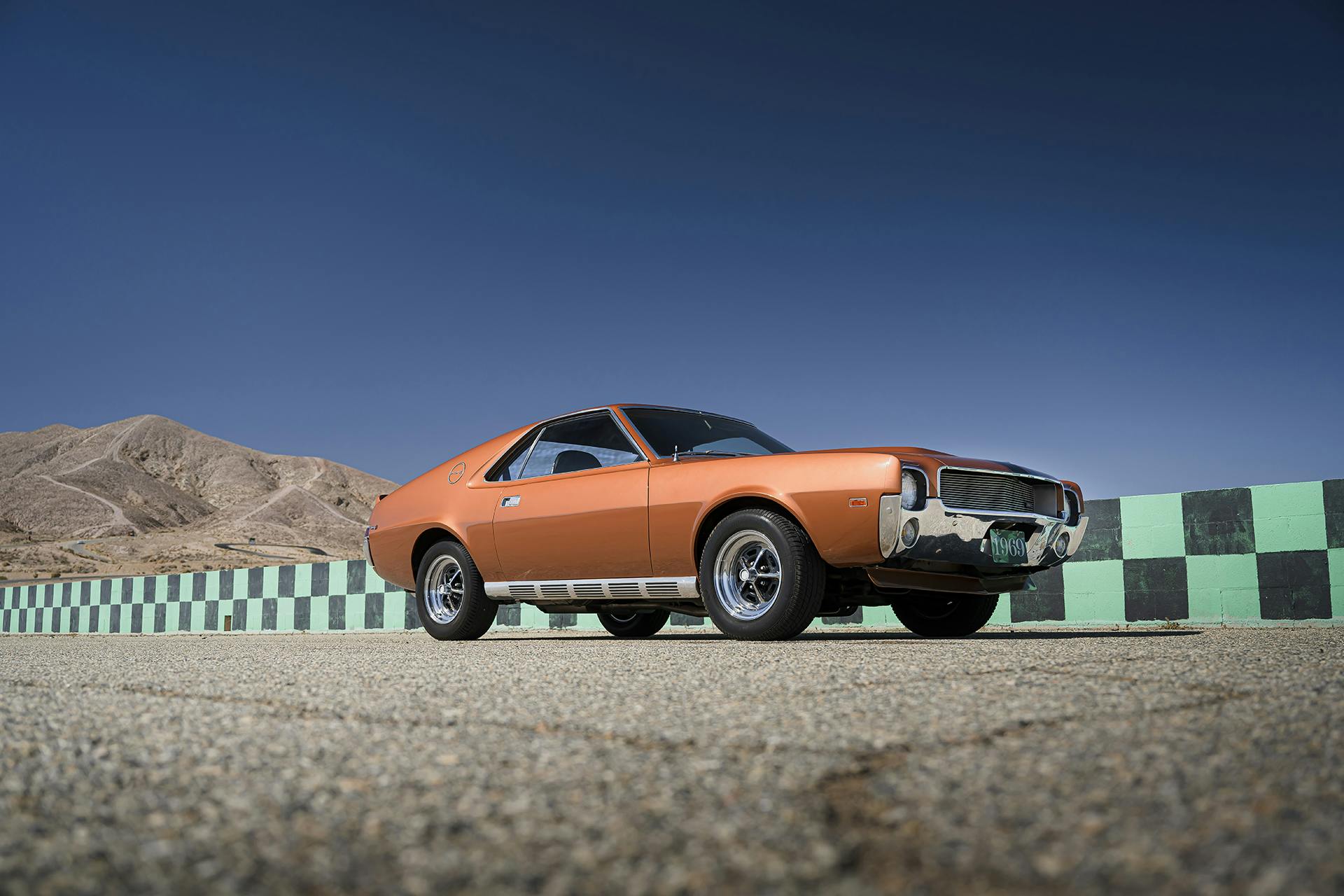
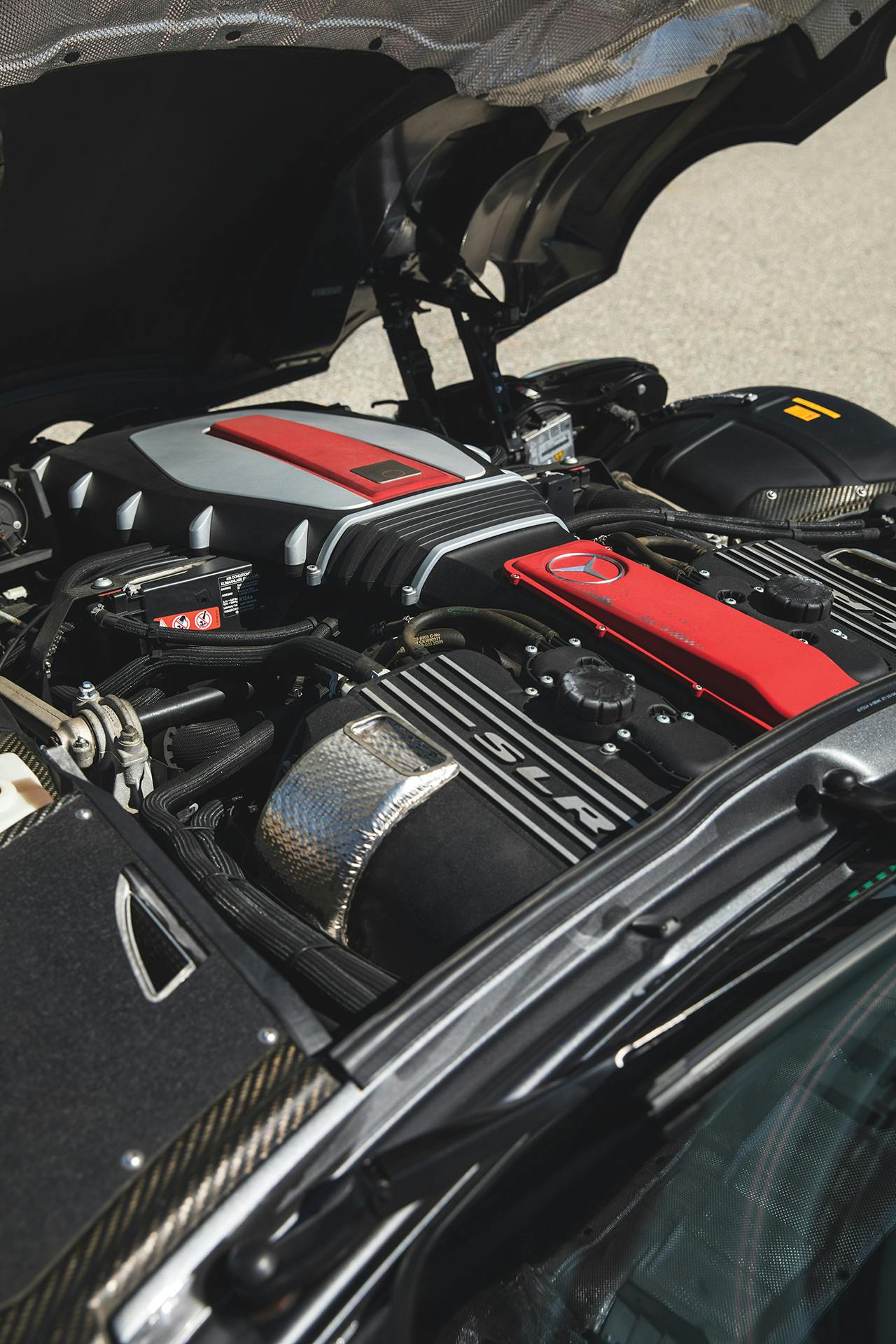
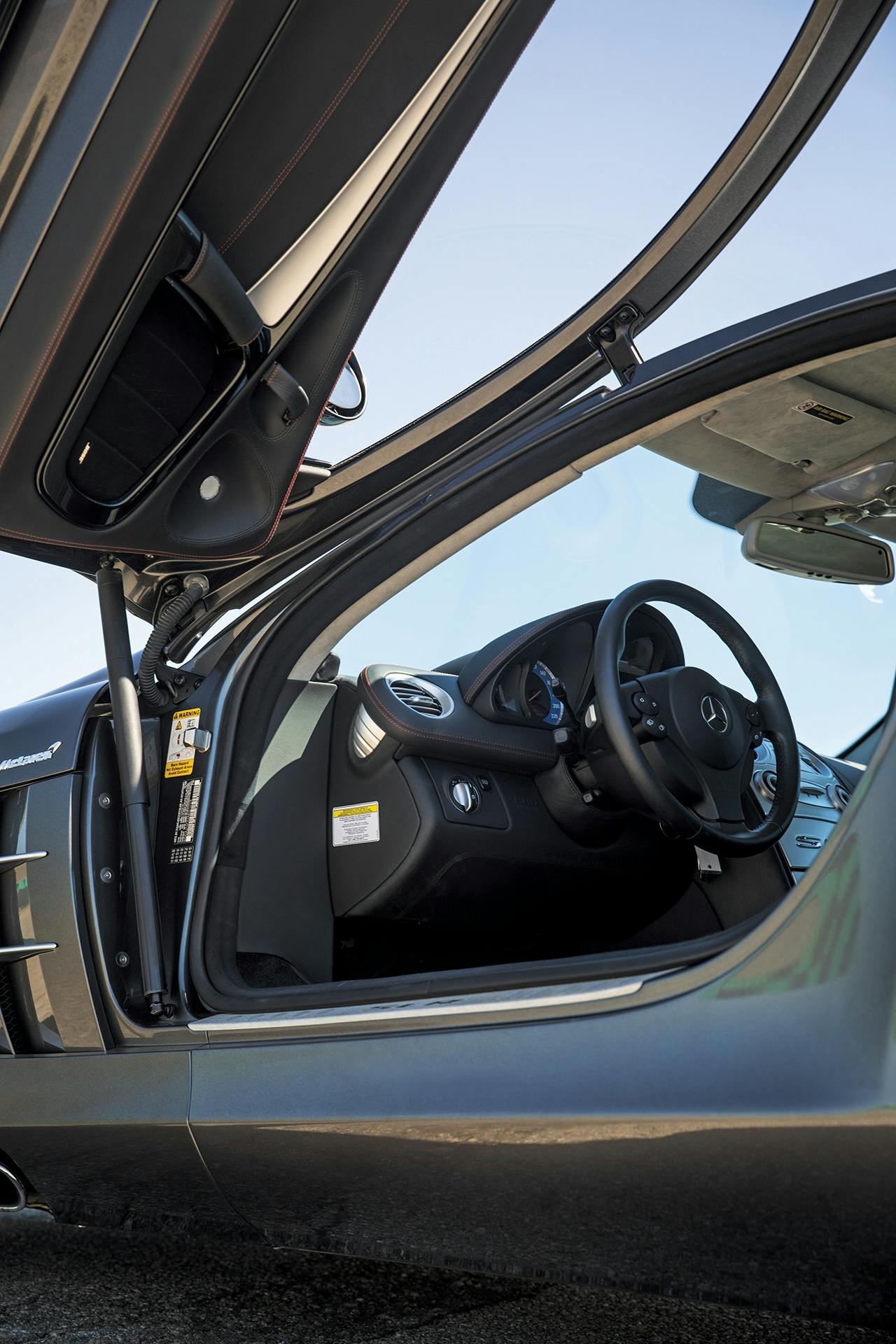


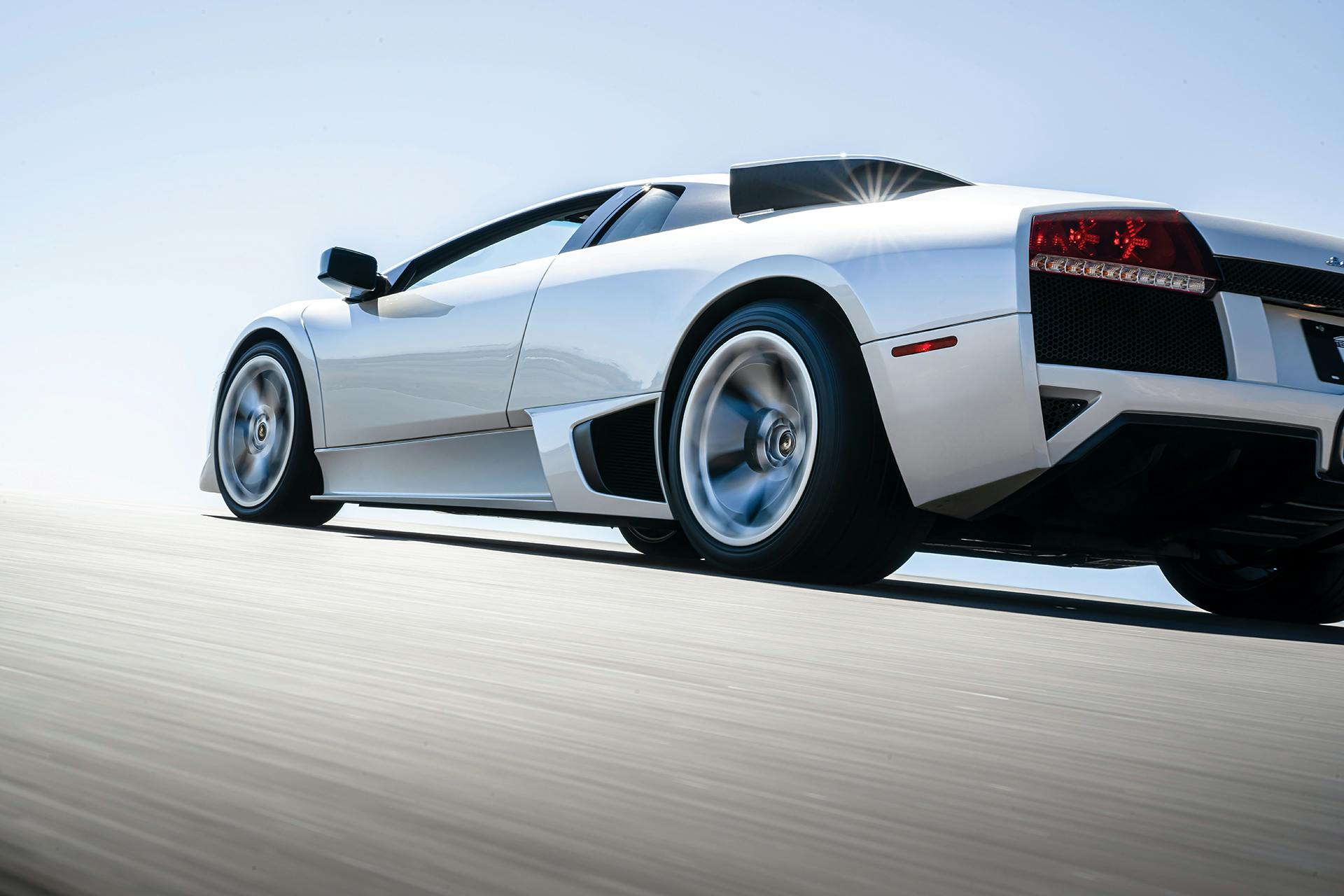
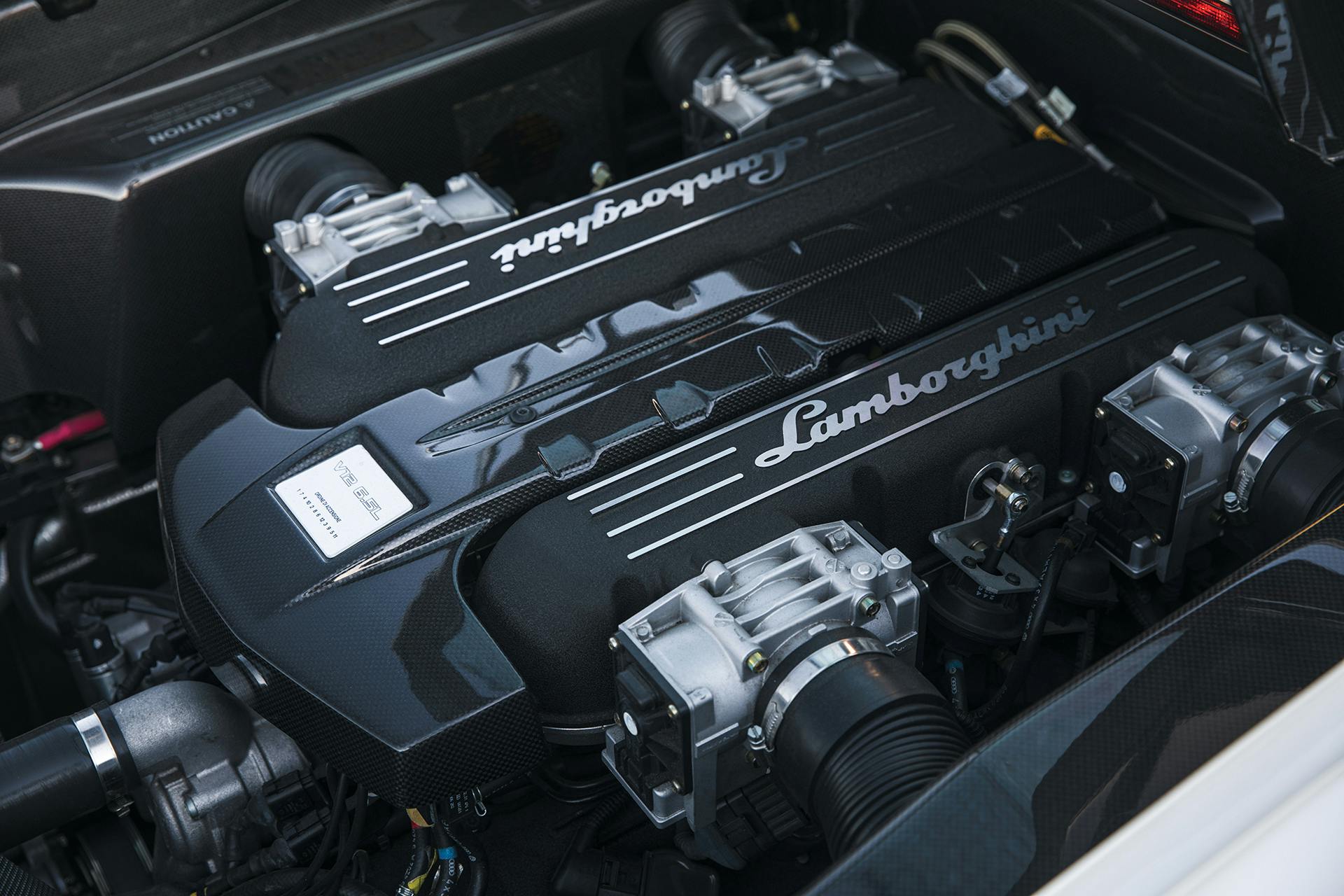
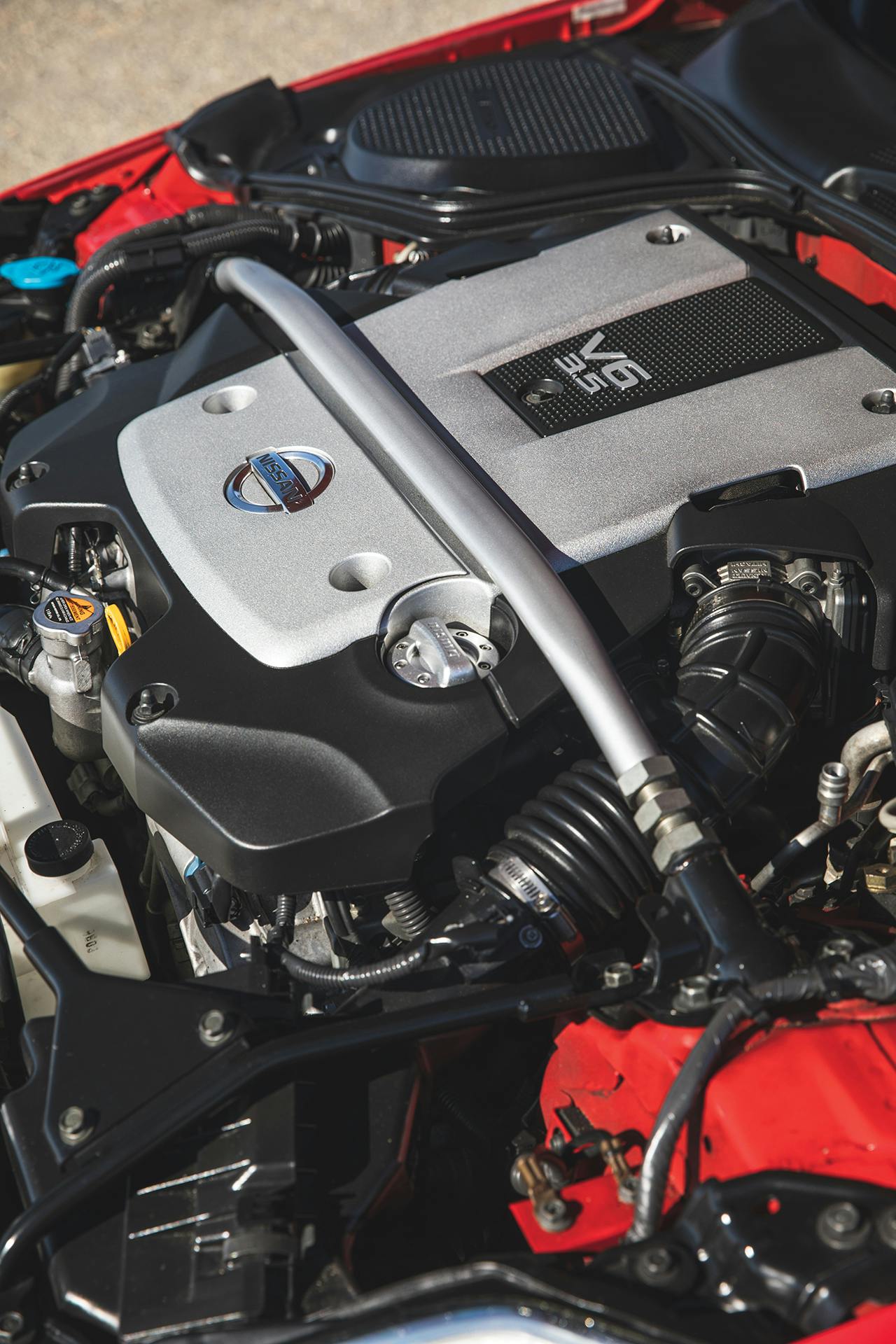
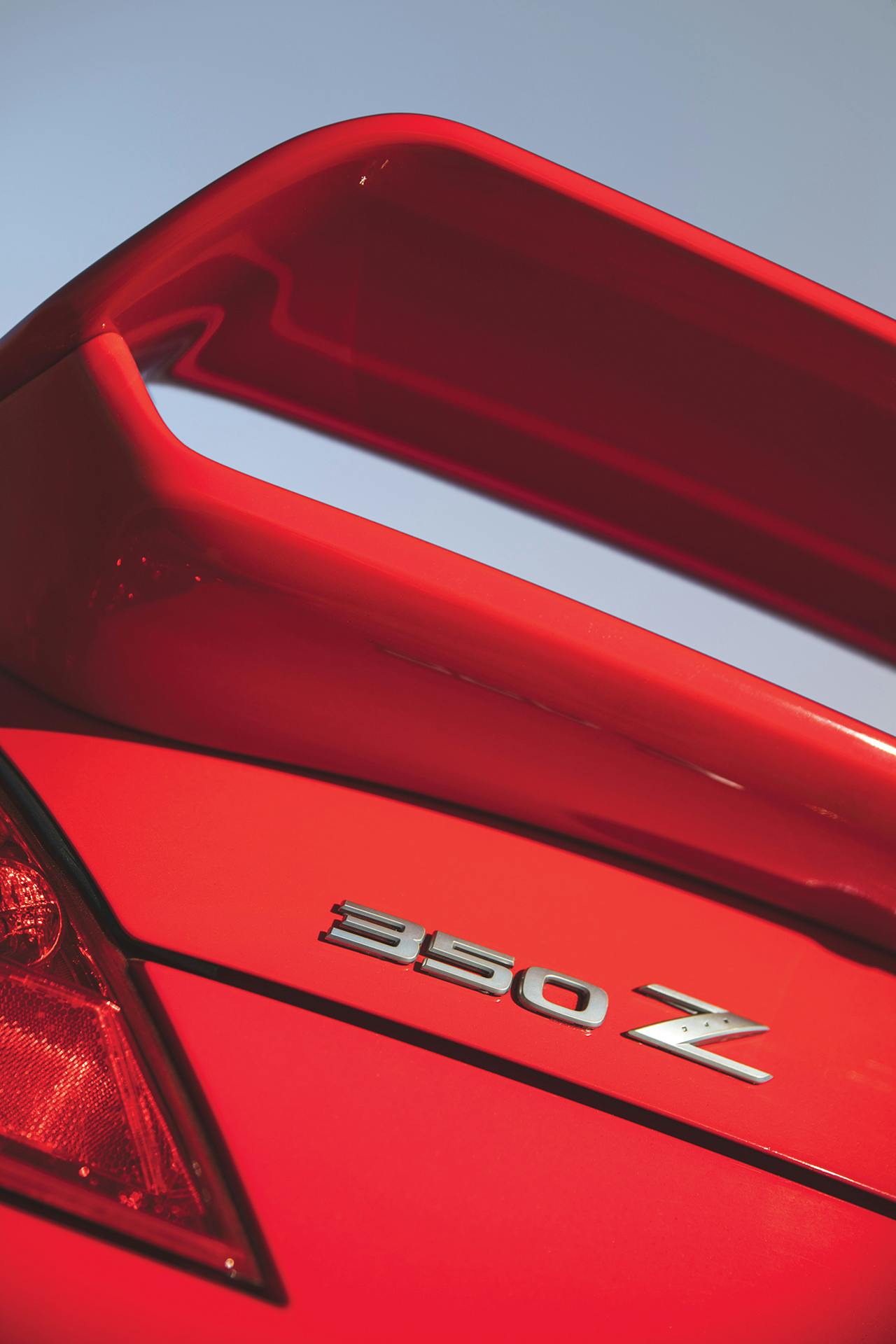
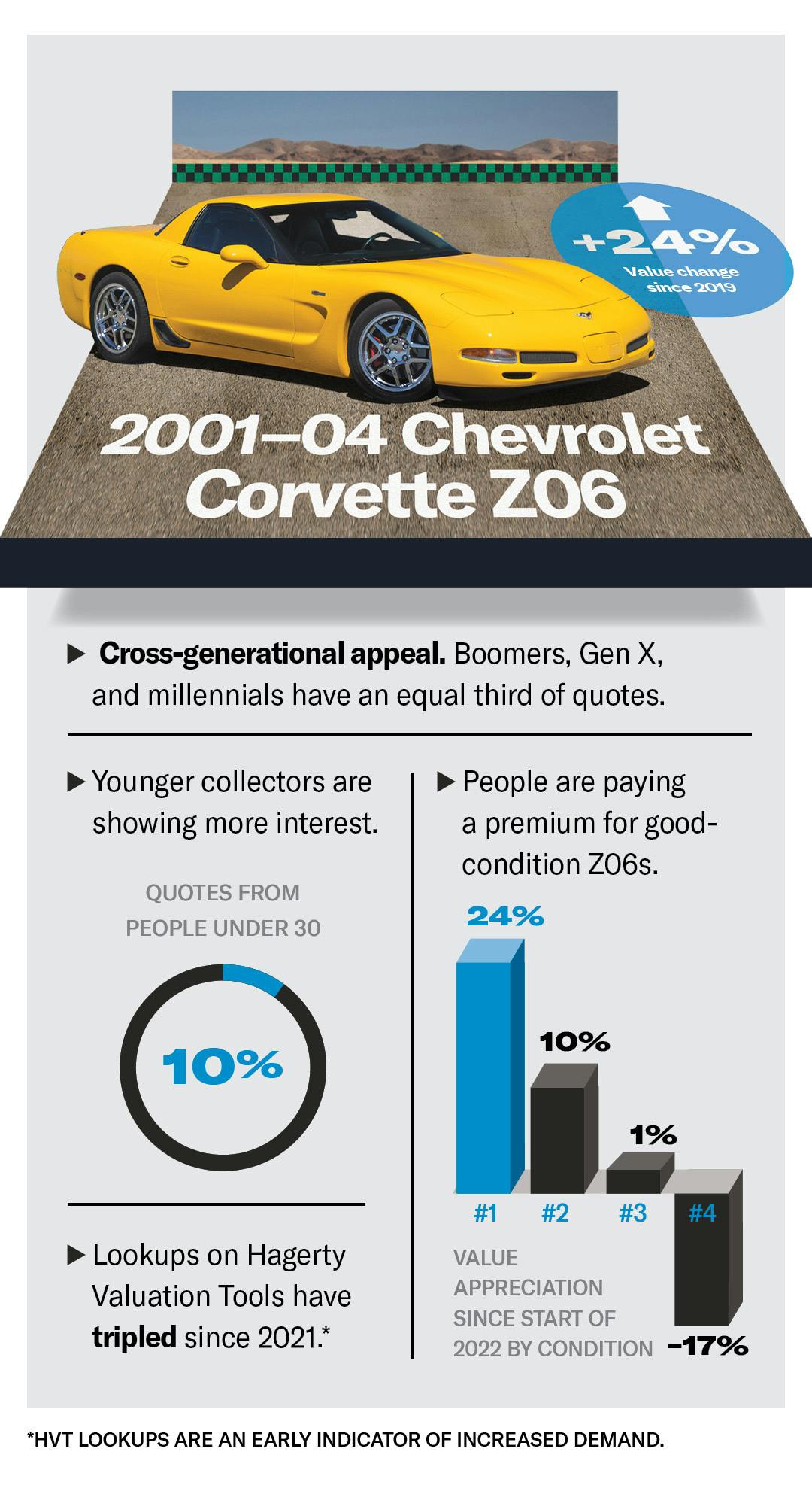
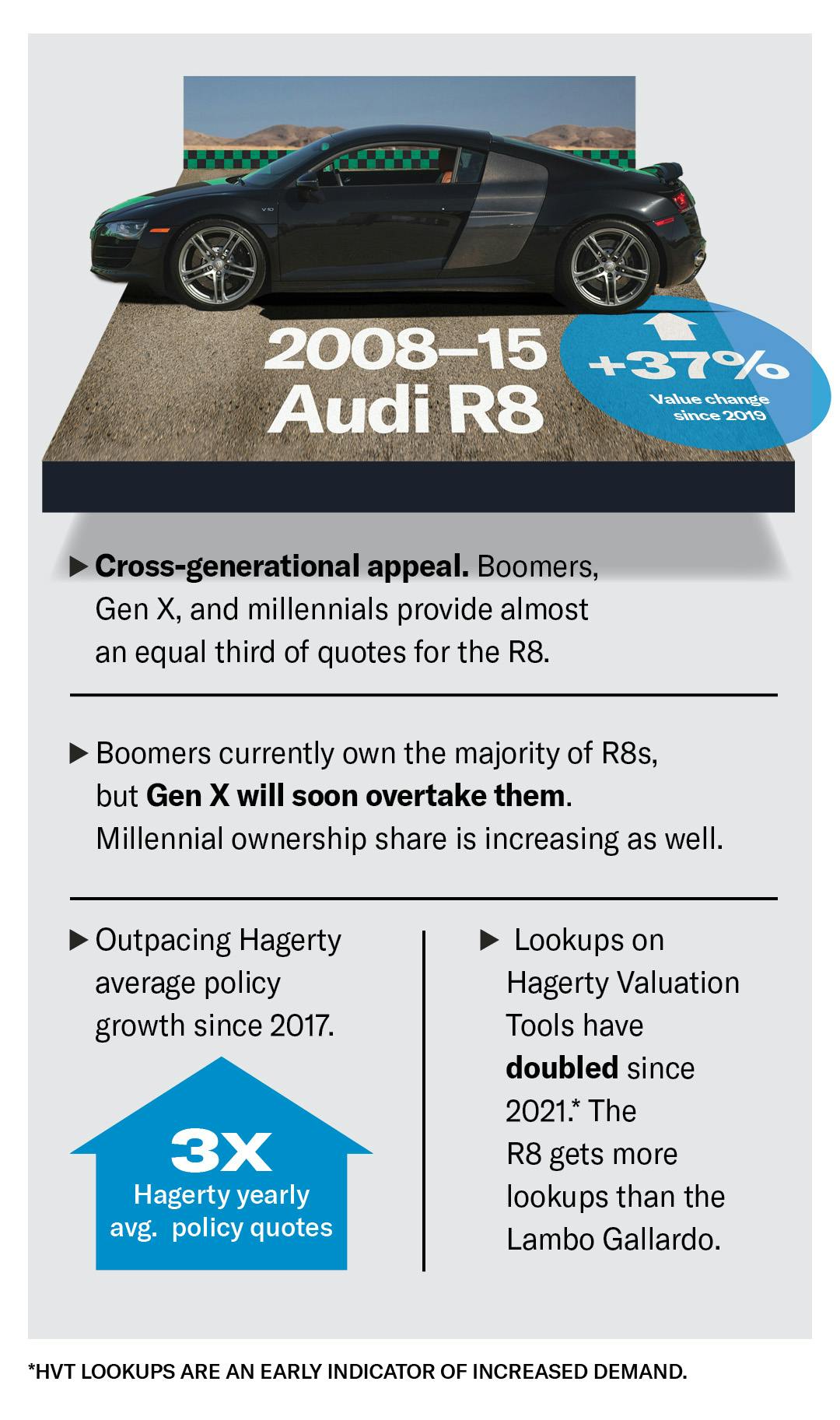
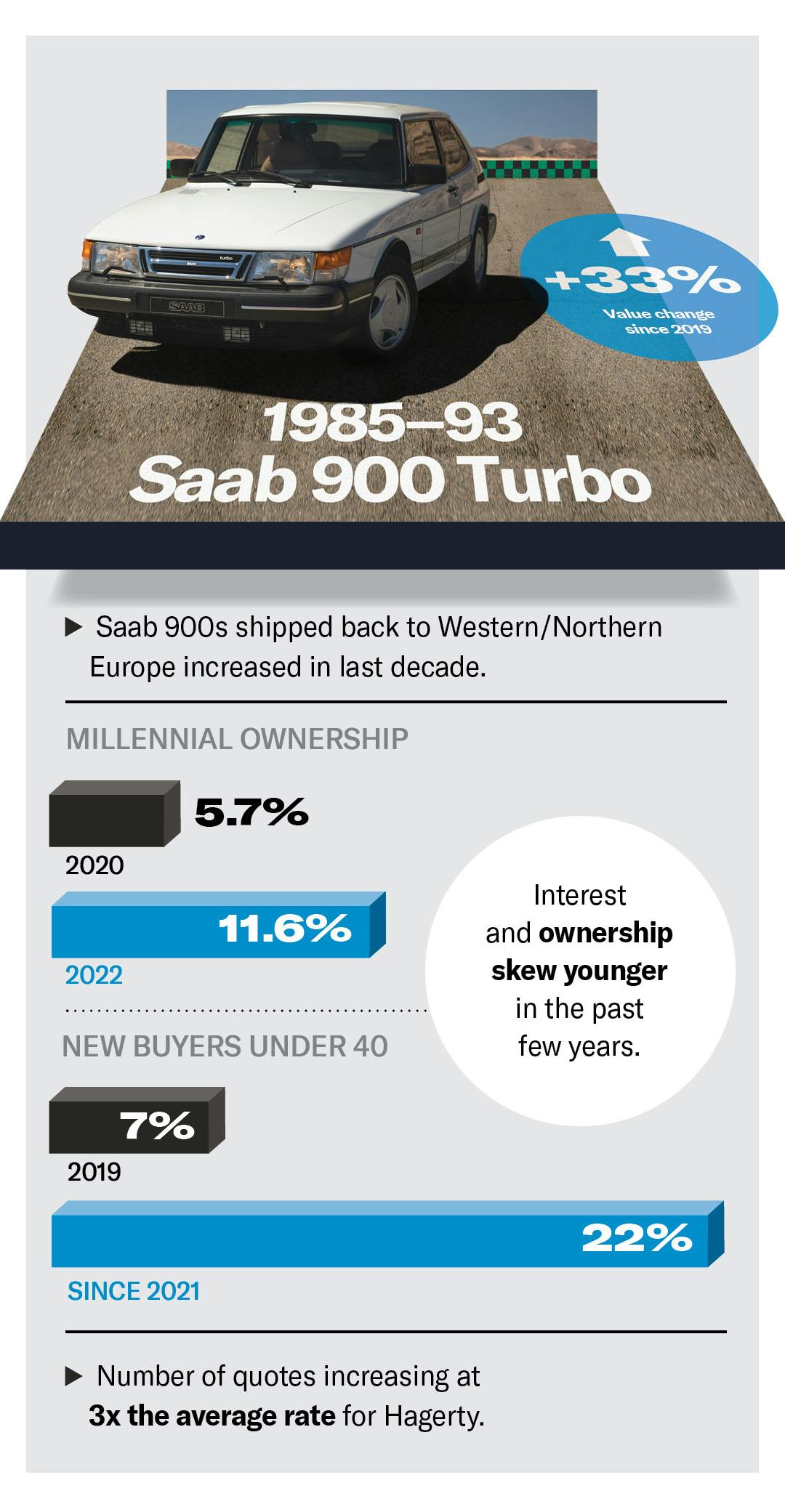
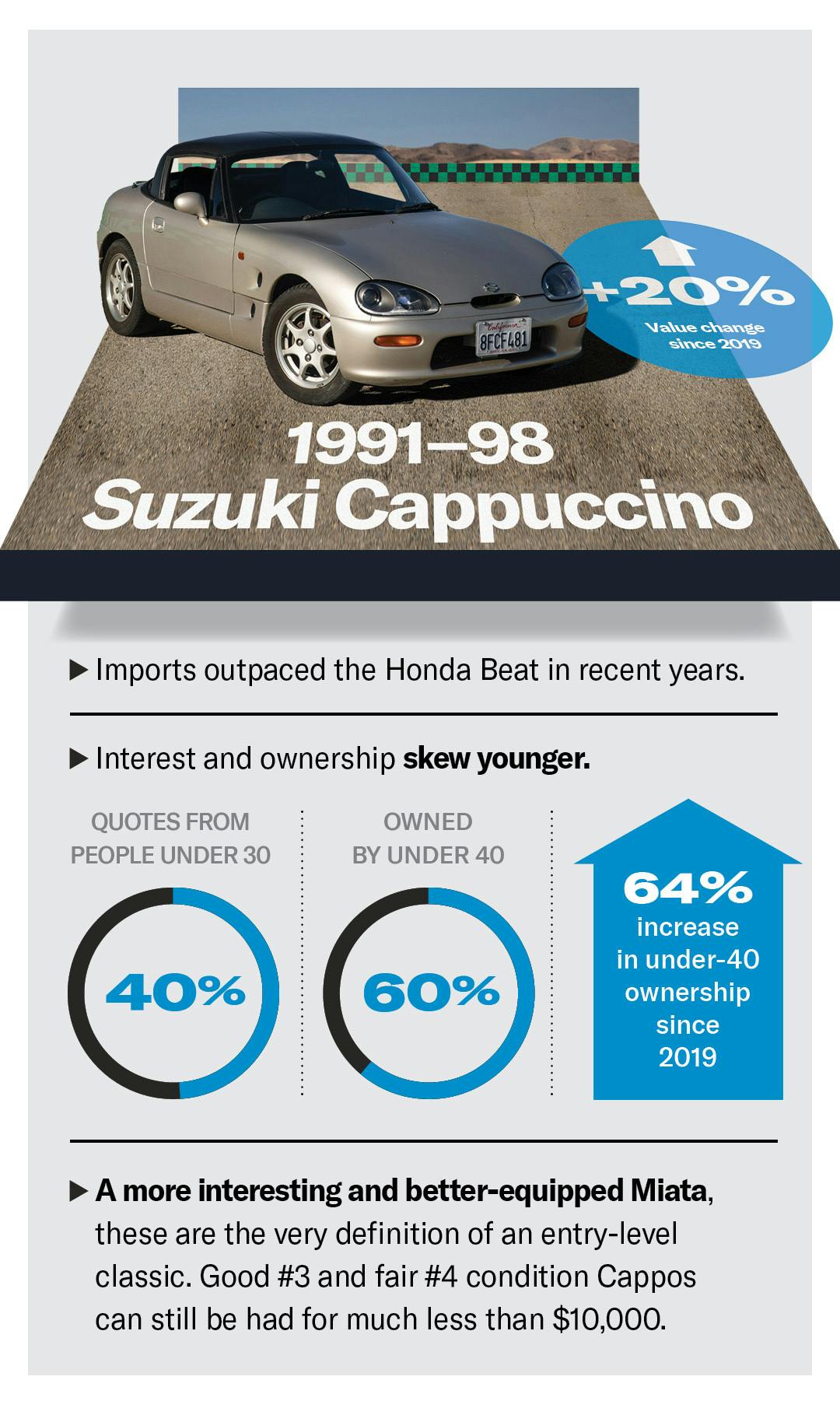
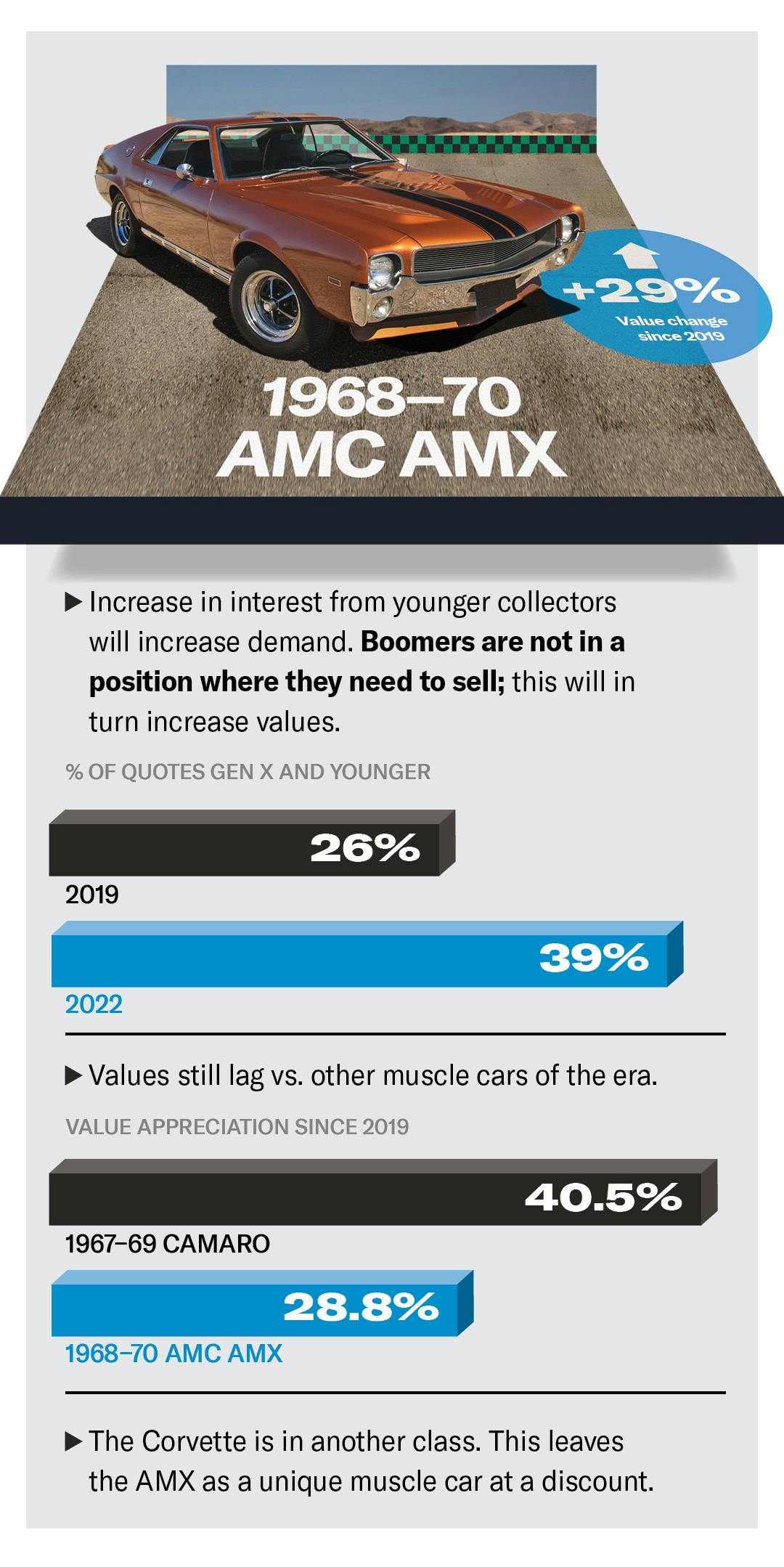
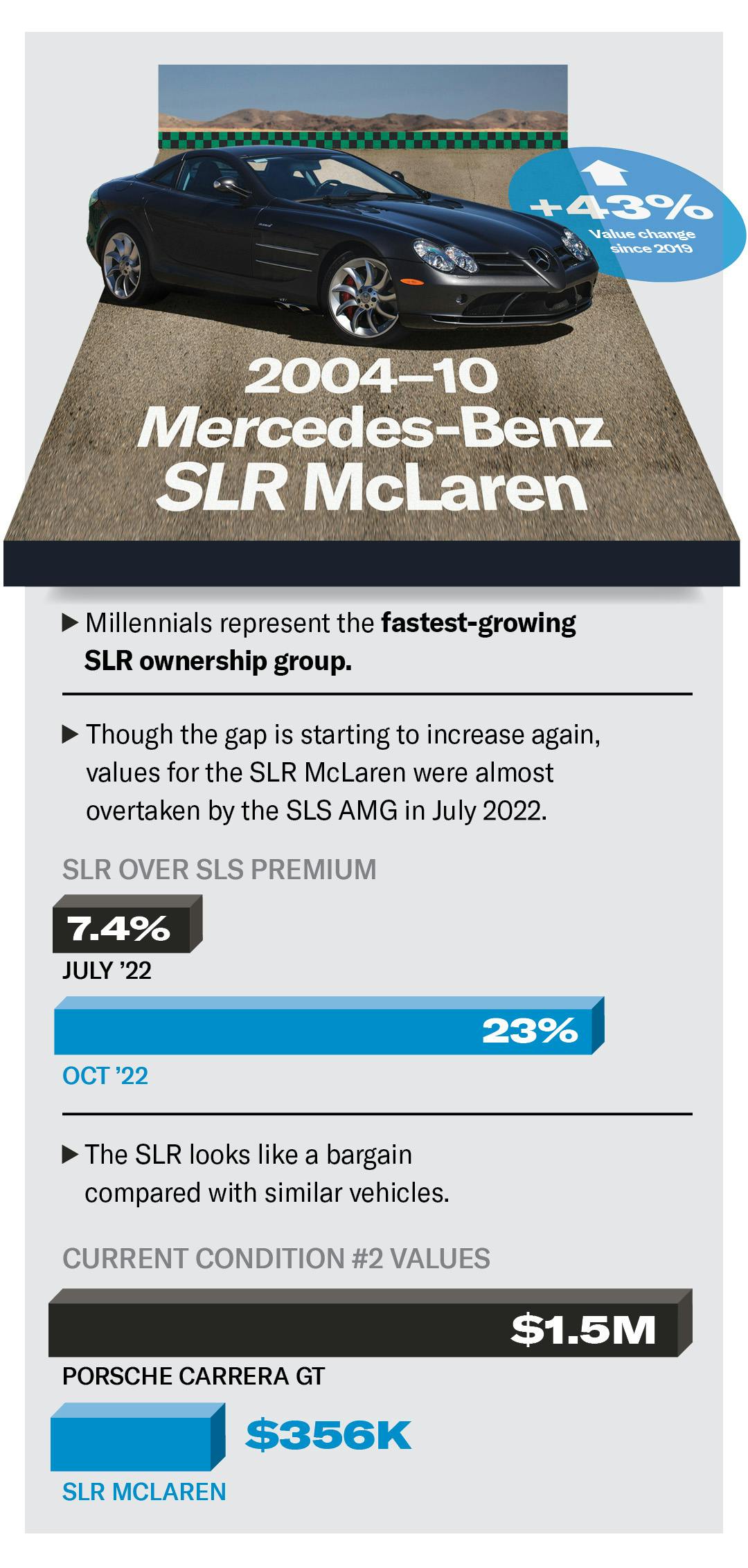
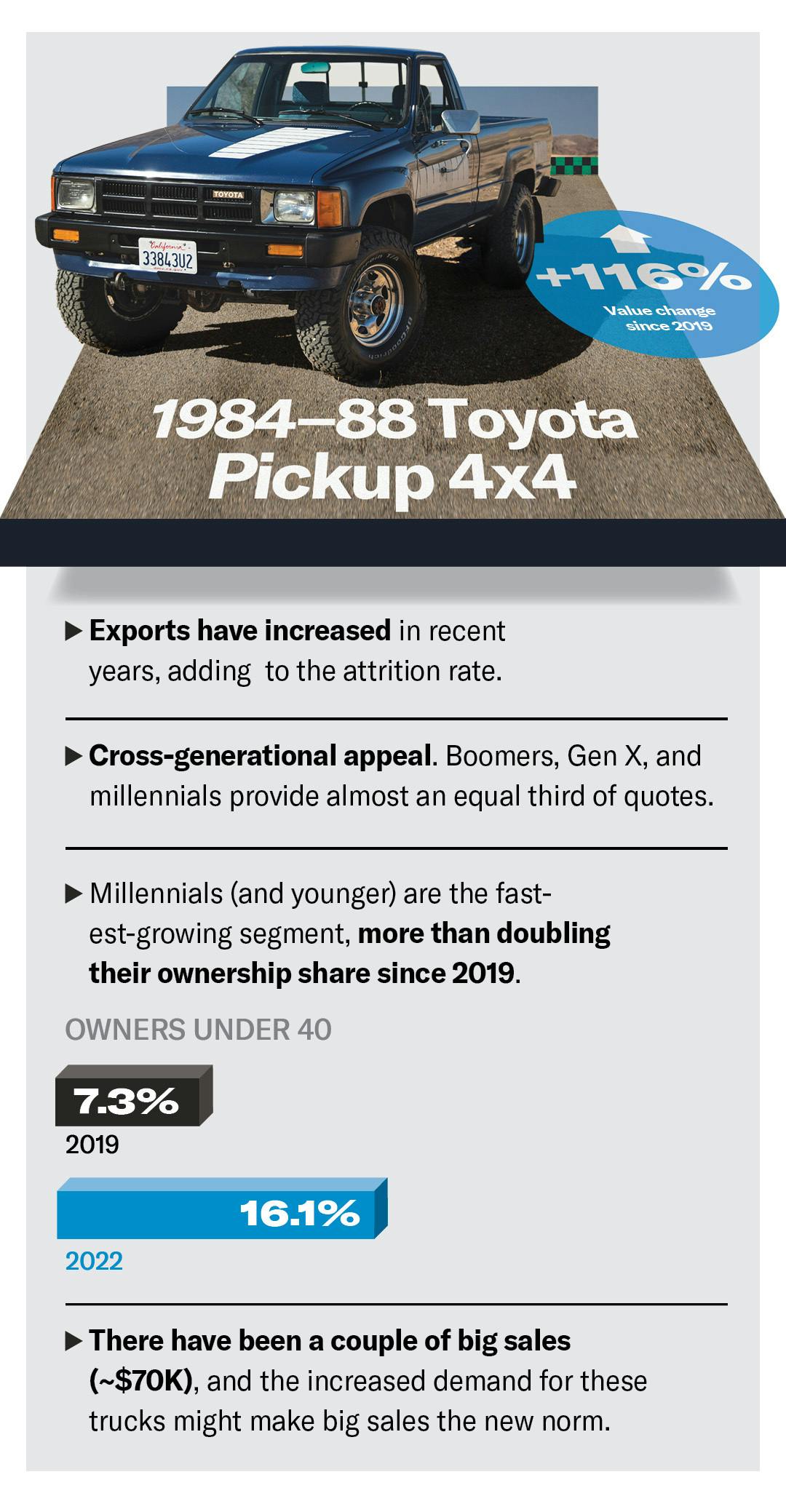
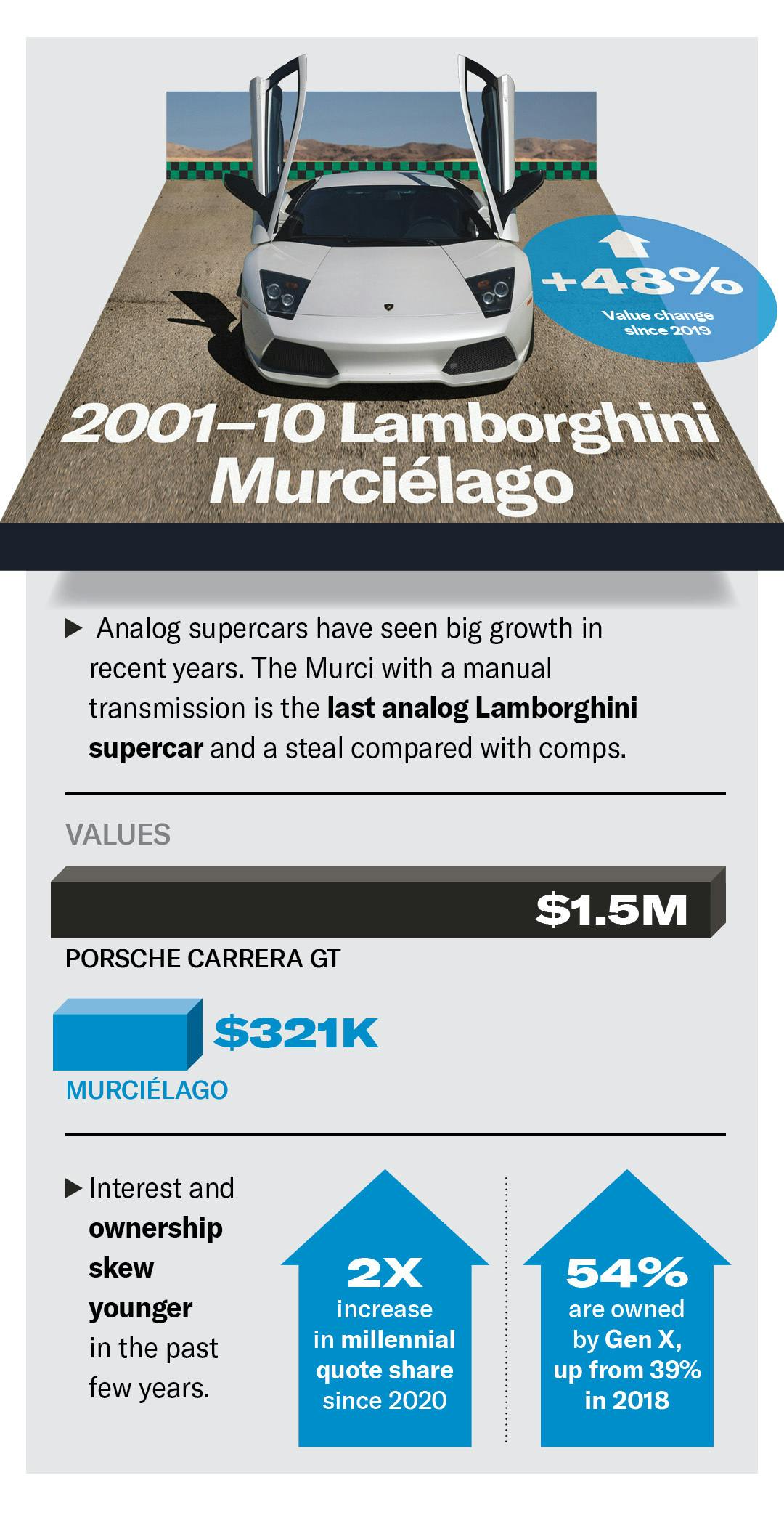
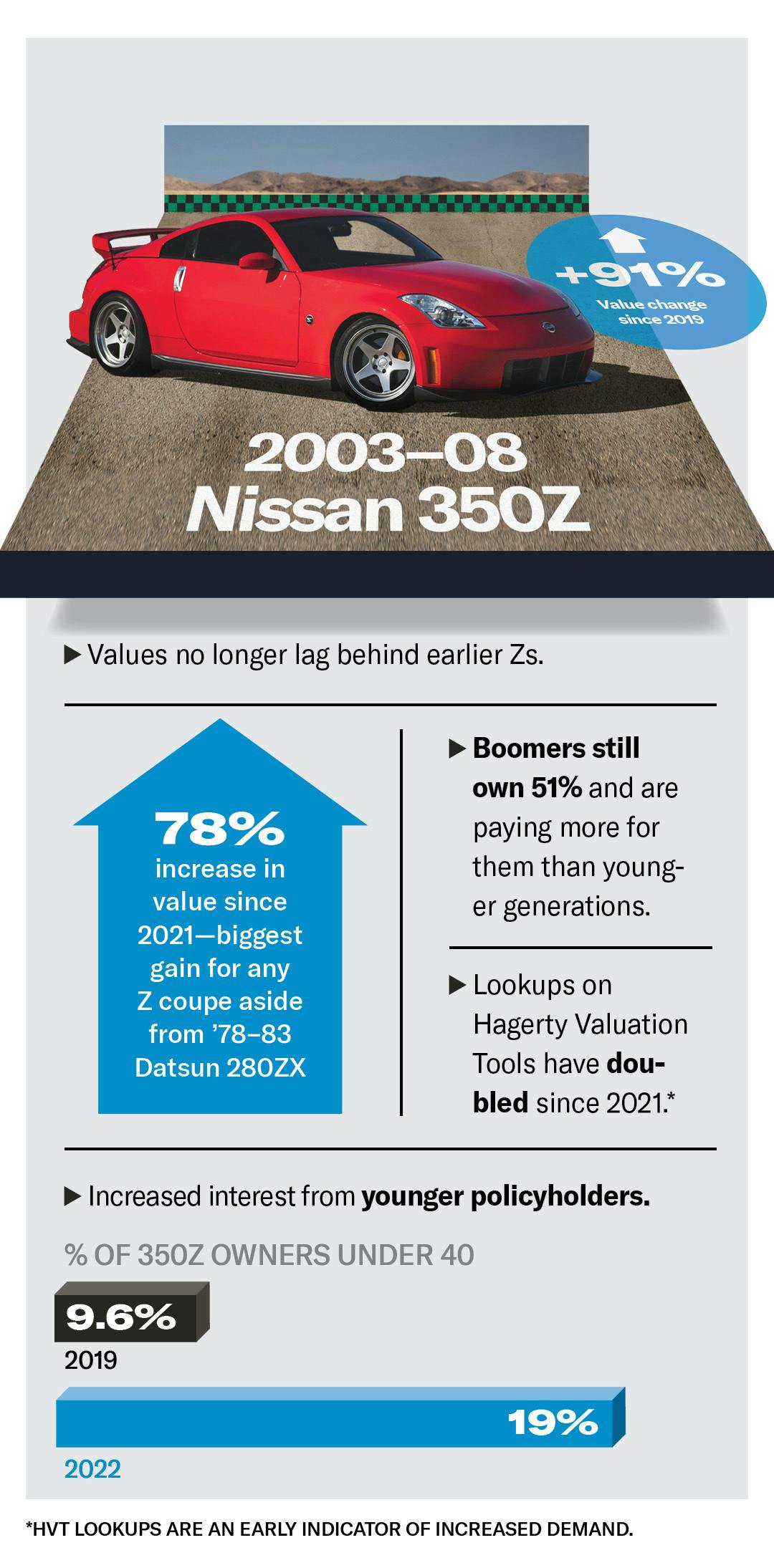

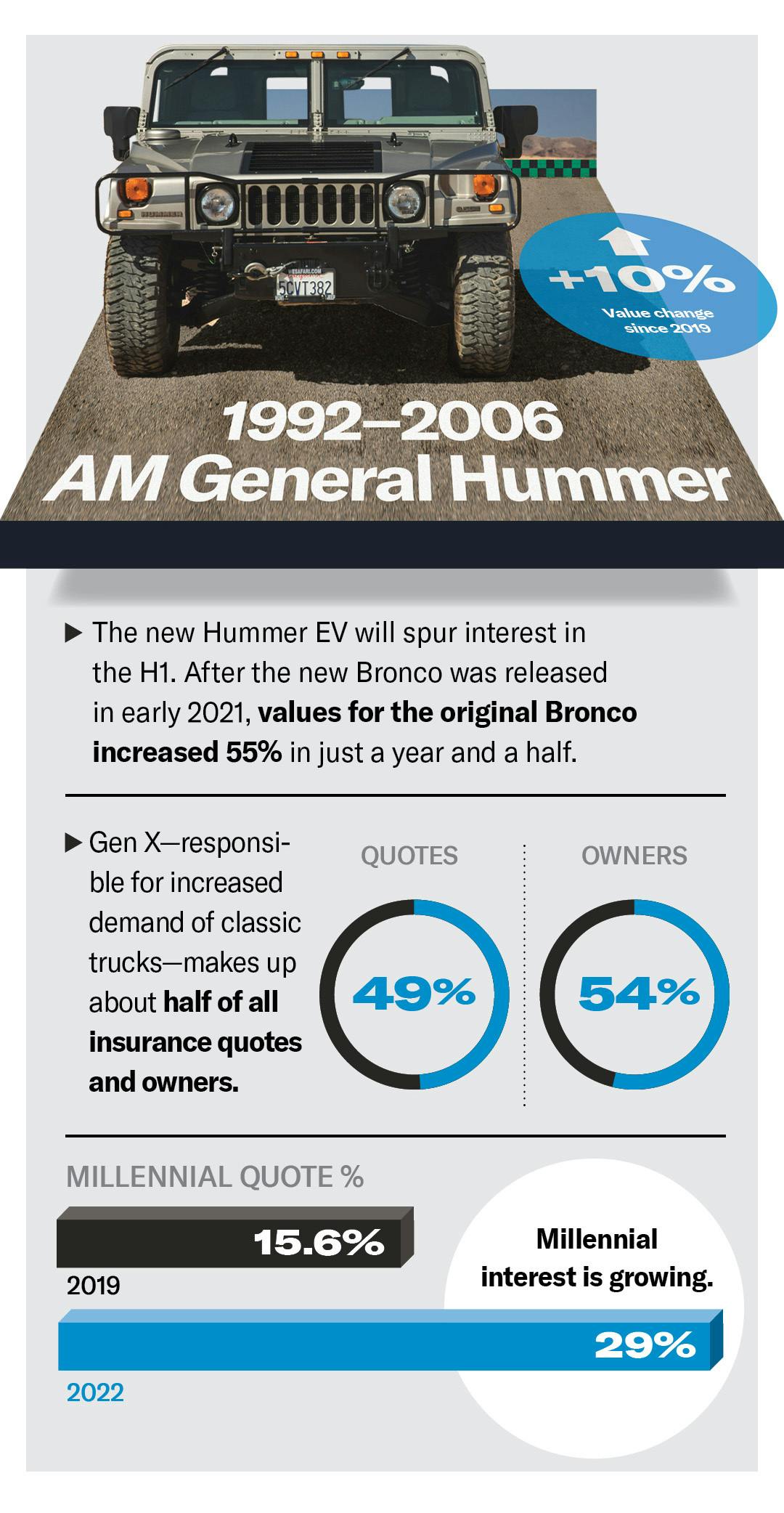



























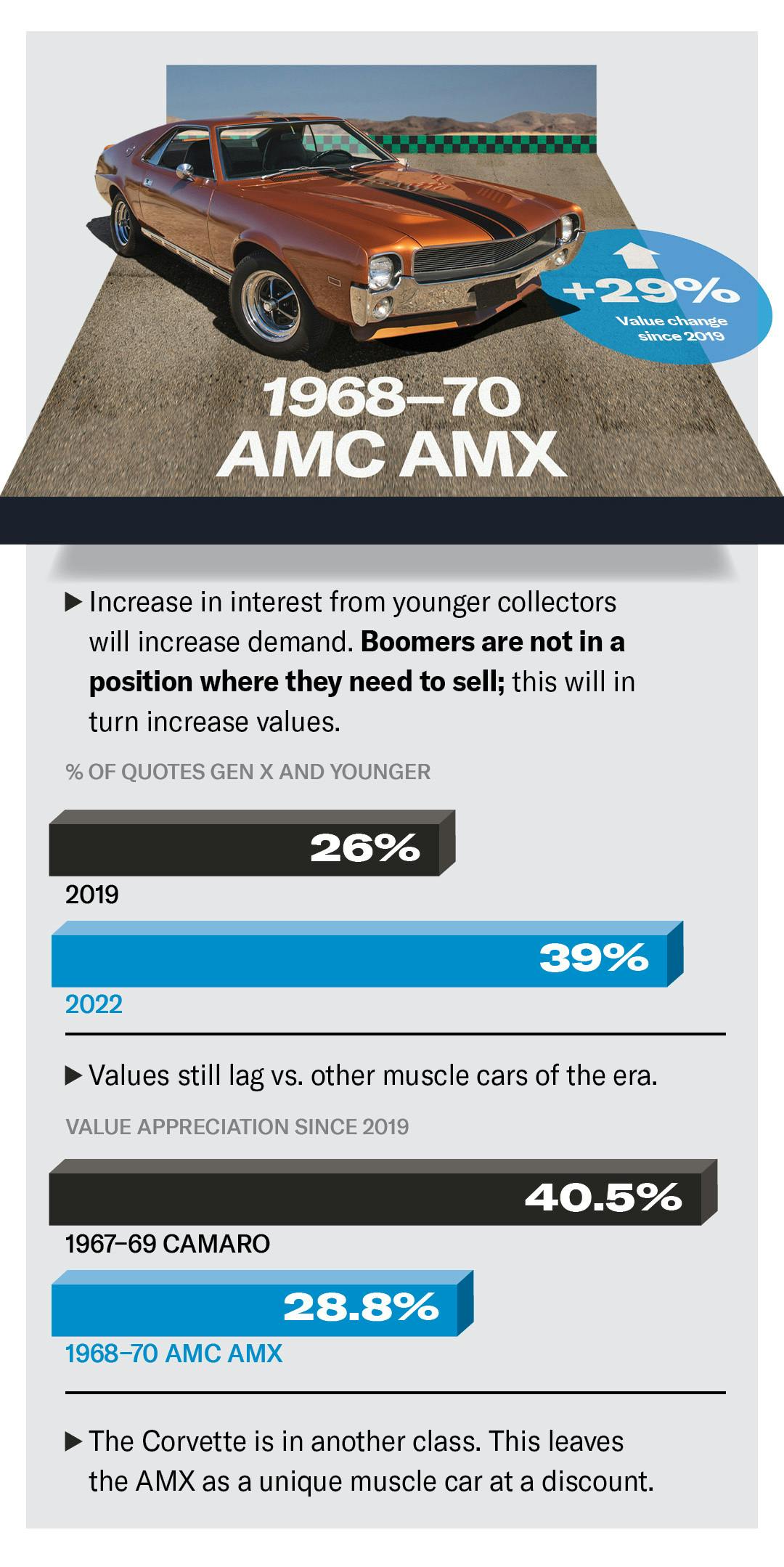







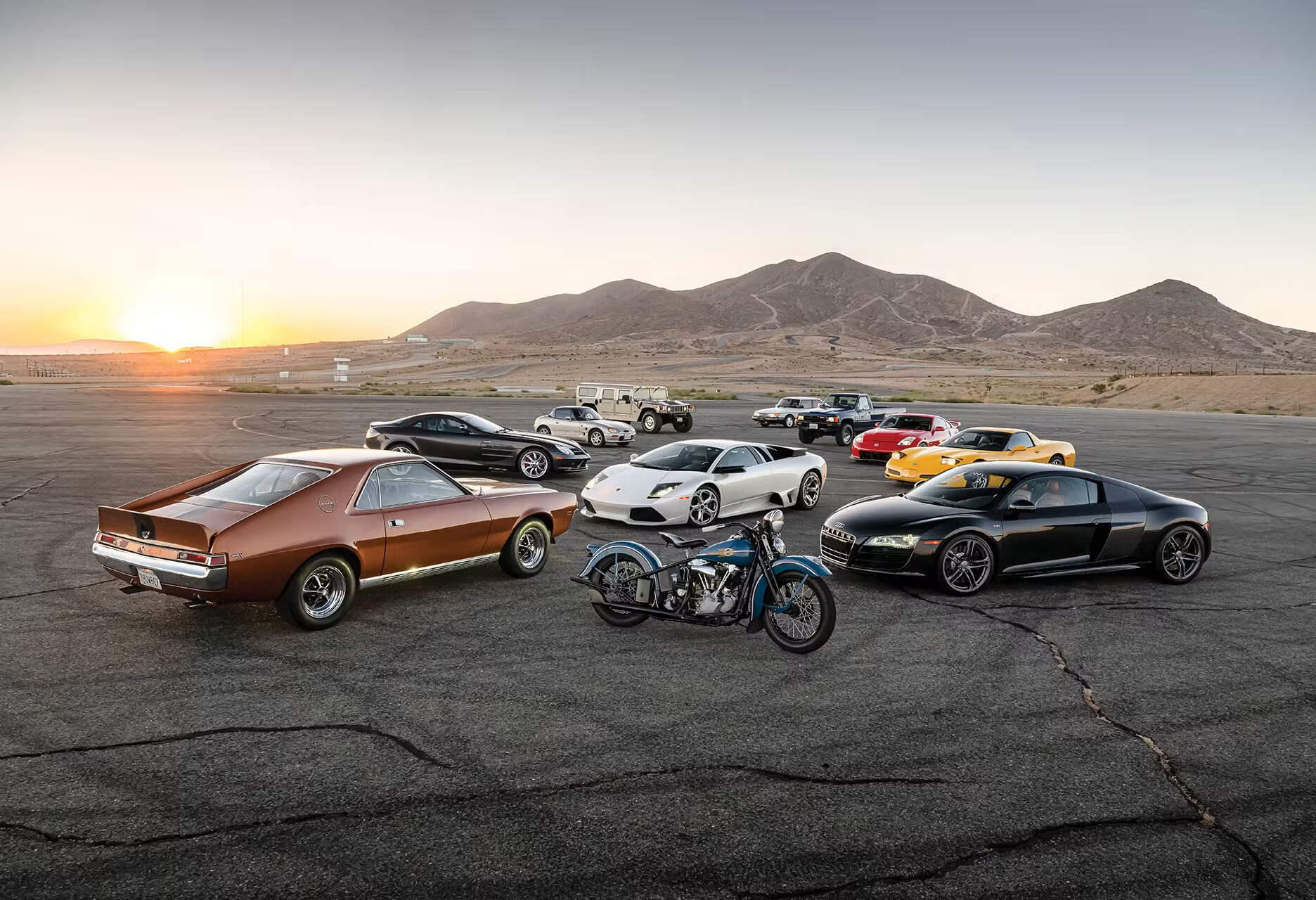
So much for replacing the 68 390 4 speed AMX I sold back in 1980 so I could finance my wedding. Well at least I have that same wife!!!!!
Our AMX was the first And only time my wife ever drove 130 mph, so she says.
I miss the Ford Capri 🤔😉👍
Oh, I feel this. And I’m divorced, so have no consolation prize. Gave up a Madeira maroon Impala SS 396/Powerglide for love.
Sigh.
Dude hang in there that’s awful
I’m a Porsche fan and always have been. I am not wealthy! I started with a 1999 and then on to 911 2006 4S 997. I am looking to buy another Porsche and use it as a daily driver. I like the 997’s 4S/S (possibly purchasing 2006 – 2008) because they are still affordable and enjoy the look and performance of the cars. I would like to hear you thoughts in what I can expect in regards to cost of maintenance, government intervention effecting cost being that it’s a combustion and value of the car in a time when we’re moving quickly into the EV movement?
We have a stunning black on terracota, fully optioned 38k mile 997 CS cab 6-speed heading to auction soon. Feel free to message us and we can send you some photos! Photos will be added to our website soon.
Can’t go wrong with any 911 derivative. Brilliant engineering, crushing maintenance costs, ethereal driving experience. The EV push will only increase the value of all 911s, especially those equipped with manual transmissions. Survey says: “Go for it!”
My wish for the new year is that all the ‘investors’ and people with too darn much money GET OUT of the hobby because they are running the prices up making it impossible for the rest of us to even buy 4 door crap cars. Everyone now thinks their junk is worth big $ because they saw something online.
Isn’t that the truth…
You hit it right on the head. These so-called “collectors” are not real enthusiasts. They’re in it for the money.
Come on man. you buy the car, you wait for a little while, drive it, and then sell it for more then you paid so you can buy another one that’s more expensive! Not rocket science! Get in the game or watch it pass you by!!!
Joe, less time whining, more time working. Then you can afford one too.
I’m not going to stop collecting because it hurts your feelings.
😂😂😩👍🏼
So true !!!!
Unfortunately that has been happening for 50 years now. First is was the HEMMINGS price, then the EBAY price and now it is the BARRETT JACKSON / HAGERTY price.
Hear you loud and clear, Neil. But Hemmings was simply a source for those looking to buy or sell a car or parts, offer services. That some speculators posted pompous ads for rusted out Clouds or Wraiths not Hemmings’ fault. Hemmings/Special Interest Autos/Small Boats late longtime publisher, ex-New York Times Review of Books Terry Ehrich, who owned a ’40 Roadmaster and a couple other old rides, was an ardent environmentalist, like car guys Paul Newman, James Garner, and an arborist. You may recall back in the ’70s on the opening page of every issue his plea: “Please recycle Hemmings Motor News and all forest products.”
Have yet to see such broad view from Hagerty, who fuels the greedathon with this steady outpouring of “Bull Market” Hamburger Helper. And when Aaron Robinson wrote a terrific column decrying the veneration of leather interiors, all he received for his historic and real world overview was a torrent of curses.
No one with half a brain buys anything from EBAY and certainly not at auction. Moneyed morons, trust funders living large off daddy’s over-leveraged real estate, witness a recent president.
Wow. Using a classic car forum to take a jab a “He Who Shall Not Be Named” has got to be the most severe case of TDS I have ever seen. I’m so sorry, and I hope you are able to find help. Perhaps I could accept a tenuous connection to classic cars if, for example, stolen classified documents were stored next to a classic Corvette. DJT is livin’ large and rent-free in your head! Be well.
I think the latest term is “crew cab” cars not crap cars.
I love people with big money. If they drive the prices up that is o.k. with me. Means I will get more when I sell my car. People with big money buy things, build things and employ lots of people. I also found people with big money are mostly generous. Only thing I don’t like about this article is too much focus on foreign cars, none of which I would ever own or want to own.
Gee James…such a sincere and pleasant retort at Christmas-time. I hope you enjoy your “collection”…yet you can only drive one at a time…which makes us all equal, even Tom. Happy Holidays!
Well Ebeneezer, er James, you might be prepared for a visit on Christmas Eve.
so right. all one has to do is look at the auctions. lots of farmers with too much money buying cars they’ll put in the barn and wait 5 – 10 to sell at auction again. NOT ENTHUSIASTS!
Some truth (less the anger) there. Sidelined by the cost of favs – want to pass on knowledge and experience to kids but hard to secure target vehicles. Looking for Audi Quattro 5 spd 100 or 200 project or Saab 900. Tommydybro@gmail.com. Up to $2-$4K price point. Reach out with ideas. Thank you!
The only ones I am bullish on are the AMX, Mercedes McLaren, Murcielago, and Audi R8. The others I wouldn’t waste garage space or money on….. (well maybe the SZ06). That being said, to each their own….
Totally Agree, wouldn’t own most of list !
Old Harleys never go out of style. And they don’t take up much space.
I’m curious, did you look at the 2006 – 2008 bmw z4M coupe? There were only 1815 built for the NA market and continue to increase in value. Also the last year for the famous S54 motor. Can’t go wrong with this collectable.
Designed BY Hobbits FOR Hobbits. Being Hobbit Humped doesn’t make a low-production car valuable.
I have owned a 2002 BWM m roadster for the past 17 years. It’s got to be the Rodney Dangerfield of BMWs. At car shows, I am frequently asked if I transplanted an S54 into a Z. Many BMW owners do not know of this model’s production. It was only produced in 2001 & 2002 for a total of less than 1,700. (Curiously, BMW produced over 5,000 Z8’s.) Earlier m roadsters had the lesser horsepower S52. It is truly one of the last analog cars produced by BMW and can embarrass cars several times it’s value and with lesser maintenance costs. 4.6 – 4.8 zero to 60 times are not unusual. Handling can be challenging but, in the hands of a capable and confident driver slipping and sliding is “almost” the most fun I have had in a car in 75 years. (yes I am that old)
I feel that those who are evaluating and valuating vehicles (and especially vintage vehicles) need to be more conservative. While I appreciate all that the Hagerty Team is doing, I feel that too much emphasis is being placed upon auction results (I say this based upon a lengthy personal history with a certain line of vehicles–which I compare with the Hagerty valuations of these same vehicles) and the MANY Hagerty articles reviewing auctions across the Country. All of this fuels the flames of “purported value”. And–while it seems that the sky is the limit–even the “sky” has limits and the “air becomes rarefied”! At some point, vehicular values will fall. While it appeared that housing prices would continue to climb–we can see that this is proving NOT to be the case. Remembering that people do not live in their vintage vehicles–I expect vintage vehicular values to fall. I’m not “wishing” this upon the Vintage Community–but, it happens and it happens historically. Sigh. Better conservative than running ahead of the “expected surge of rising values”!
Valid concerns, as Editor of the Hagerty Price Guide, I can assure you that we look well beyond auctions to determine our valuation. While auctions are obviously the easiest way to see confirmed sales, placing all our eggs in the same basket data wise, gives a very skewed perspective. We supplement confirmed sales data with a review of asking prices, insurance quote and endorsement information and discuss the market with numerous dealers, appraisers and specialists to get a more complete view of the market.
What we have noticed lately when reviewing values for the upcoming edition of the price guide (goes live January 1st on Hagerty Valuation Tools) is that the craziness is slowing down. We’re seeing transactions for many vehicles happening at lower points than asking prices (although some sellers are getting the message). No indications right now of a correction, but sanity is starting to creep back into the market.
Greg, you miss the point of many posters here. We’ve been reading the same self-appointed auto value du jour savants’ proclamations for years in Sports Car Market and a dozen other car mags past and present for decades. Any chance of Hagerty, rather than running auction house results and press releases as cheap filler, running more articles about, you know, um, c a r s, leaving the money talk to Robb Report, Dupont Registry, Kiplingers, Wall Street Journal Weekend Edition, and the aforementioned me-too auto publications?
Don’t read too much loyalty in many of us. Because either retired, bored, or being an autoholic taking a break from work, we peruse Hagerty for the welcomed once in a blue moon historic article by Aaron Robinson, Don Sherman, Larry Webster on the why, design, engineering, marketing of an enduring barouche.
Oh boy… where to start? I am a litigator and my instincts are to go long and hard about how Hagerty (and competitors) distort the market- unintentionally of course. I am intentionally not describing the 60s muscle car I have. It is 100% stock, mint with over 100k.
I have had 63 offers to buy my car (including several from dealers) for way, way above the top $$ listings by any/all services. A dealer stopped me in a parking lot, showed me the usual top/low value charts for my car. This dealer offered 15k above the top listed value and candidly told me he “will still make money” when he sells. Another DEALER offered me 20k over book. Doesn’t matter because I intend to die with the car.
My key point (among many others) is that Hagerty’s, Kelly etc never take into consideration the number and sales figures of private deals. There are effectively NO public records of the sales prices of private deals that are remotely accurate. Private sales are rarely reported accurately and if buyer and seller reside in different states no one but the parties will ever know the real transaction price. Cars that visibly “need work” carry sales contracts kept real low to keep taxes of all kinds way down. Additionally, no service can know what my insurance carrier agreed to insure my vehicle for. As an attorney I can get that info with a subpoena easily.
If the so called market value of a given car in very good condition is say 50k but the insured can insure it for 125k because he can show that there ‘are willing buyers for the insured car at 125k” they will insure it for 125k.
All under the table and perfectly legal. I don’t want to make this about particular cars so… I had a car in the 70s that was not a particularly expensive car. I have been looking for years to find one in at least “good” shape. Can’t find one. I know what the model is valued at by all the services but I want that particular car so bad and for so long that I will overpay for it. Lots of collectors seek the cars that they had as teenagers and will overpay if they find them. Some folks buy classics, don’t drive them and thus insure them for minimal value as they are in storage. That same car driven daily by the owner is likely to be insured at replacement value as the premiums are worth paying. The stored car could be worth 300k and the driver $50k.
Does Hagerty cover local estate sales of collector cars? Last year I was at a charity sale of the furnishings of a multi million dollar home. Purchased at that local sale was a car that went for over 200k at a Mecum auction. This one with about 20k on it, 35 years old, perfect went for $15,500. One bidder.
I always take the Hagerty lists with a grain of salt – the Company is pretty much built around ascending values for older vehicles…..
I agree with Joe. I bought and sold cars like Porsche 911 for far less money than they go for these days.
How the heck did they get that Suzuki Cappuccino smogged and licensed in California??? This states DMV in inherently unfriendly towards the car hobby.
California hates all vehicles. The California Air Resources Board (CARB) disallows anything and everything regarding automobiles. As an example; If you replace a dirty, polluting, pre-1974 engine in an old auto with a clean, lesser polluting, efficient, new engine, registration will be denied.
Fortunately, there are many other states in the U. S., particularly in the Southeast, that would be happy to welcome you “home”, Erne.
Say what??? commies??? are you for real?
Here we all are lovers of the automobile, rejoicing in everything about it and someone always has to start with the negativity. California has nearly 40 million people (and most of them in Los Angeles) and has been the center of car culture since the beginning. We have had the worst smog in the nation since it has been documented so please excuse us for changing some laws in an attempt for better health. And by the way you can still drive old cars smog exempt.
Amen squared and cubed, Christopher. But such as Allan Klein do require the impedimenta of facts.
Typo above. “….such as Allan Klein do n o t require the impedimenta of facts.”
Pre-1974 vehicles in California are not required to be tested/inspected and “smog certified” in order to be registered. You can put whatever you want in them. However, 1975 upwards can be a can of worms,
It’s totally doable. Costs a boat load of money to get it up to spec and certified. I’ve talked with a shop that offers CA smog compliance upgrades and works with the state to certify and they say that on something like an NSX or Skyline it can cost upwards of $10,000 by the time everything is said and done.
This is so wrong on so many levels, I’m not even going to attempt to correct the statement. How the hell do celebrities end up with 1970 Road Runners with 1000 HP Hellephant engines registered in CA if CA is so “anti-car”? All that is required is using CARB approved update/upgrade equipment–and a shop or fixer who knows the ins-and-outs of registering modified cars in CA. CA has more modified cars on the road than any state… by at least an order of magnitude compared to any other state. JDM imports are running around all over the state–cars never sold new in CA running around with 100% legal CA registration. Imagine that. Let go of your CA vs. cars prejudices because they simply don’t exist.
A lot of cars for the trust fund kids…
Seriously, one you can’t buy, Several unaffordable types, which leaves us with an ugly Corvette and a ancient Saab, which in my neck of the woods have fallen down the food chain to be seen in bad neighborhoods.
I wanted to get a military Hummer, but the state won’t license them.
I called Olympia and asked.
A young woman at the State Patrol said they were too heavy (5800 lbs empty) and too fast (max speed 55) for the highway.
“I wouldn’t want one going down the freeway at 80 and hitting a car” she said. Really.
That mindset except the problem with collector cars, soon we won’t have a place to drive the.
John+B there are many HMMWVs registered and licensed in WA state. Many of the cars on this list could have been bought at one time for very reasonable prices or at least a fraction of their current values. It’s all about owning it at the right time.
We had a Saab from that period once. We found that the maintenance costs were pretty high. It actually burned a hole in the distributor cap once. That ran up a pretty hefty towing bill. I must admit that it did handle snow very well, but I wouldn’t have another.
I don’t think the ’70 AMX should have been lumped in with the ’68 & ’69. It is one off year, better looking, and rarer (with only 801 X code automatic cars built).
Amen
>>I don’t think the ’70 AMX should have been lumped in with the ’68 & ’69. It is one off year, better looking, and rarer (with only 801 X code automatic cars built).<< 1968-1970 AMXs are all the same car. The only thing changed in 1970 was the grill and taillights and interior trim. AMC had no money to change anything else.
Even more rare is the Mark Donahue Javelin. I had a 1970 back in the 70’s that I wish I had never sold as I can’t find one anywhere.
I bought one of those ’85 Toyota pickups new and loved it. It lost a battle with an icy highway a few years later and had to be scrapped. I found mine to be fast enough – I could do 80 all day long with the fuzbuster running interference. You’re absolutely correct that it’s hard to find a good one now. I tried a few years back.
Like all Japanese imports of the 80’s era they just rotted away. Had a Subaru BRAT in 1984 that the engine fell out of in 1992 because of rot
You guys are missing the boat on S197 Mustangs.
It’s a fun list of cars. A few I would be interested in trying out some time.
I worked on a quite a few Ramblers and AMCs years ago. The front ends were horrible, the door hinges wore out just looking at them , body integrity was horrendous, the Presolite alternators made Lucas look reliable and the Borg Warner automatic with the 9 tubes instead of and internal flow valve body were a disaster. They only became decent cars when they started using Chrysler trannies, GM alternators and improved front ends in the early 70’s. If I remember correctly they still had some models with vacuum wipers in the early seventies.
I “inherited” a Saab 900s as a company car. I always maintained that the “s” was for slow. This was in my Houston days. In order to not sweat, the A/C had to be on max cool / max fan. I had to turn the fan down to hear cell phone calls which, by the time the call ended, invariably left me perspiring. UGH.